Latin Dictionary
Latin Dictionary is in Latin.
Culture, General Things, Dictionaries, Latin Dictionary, Ab officio
ab officio. to neglect ones duty.
Evelyn's Diary. 08 Sep 1686. Dr. Compton, Bishop of London (age 54), was on Monday suspended, on pretense of not silencing Dr. Sharp (age 41) [NOTE. Assumed to be the subsequent Archbishop?] at St. Giles's [Map], for something of a sermon in which he zealously reproved the doctrine of the Roman Catholics. The Bishop having consulted the civilians, they told him he could not by any law proceed against Dr. Sharp (age 41) without producing witnesses, and impleaded according to form; but it was overruled by my Lord Chancellor (age 41), and the Bishop sentenced without so much as being heard to any purpose. This was thought a very extraordinary way of proceeding, and was universally resented, and so much the rather for that two Bishops, Durham (age 53) and Rochester (age 51), sitting in the commission and giving their suffrages the Archbishop of Canterbury (age 69) refused to sit among them. He was only suspended ab officio, and that was soon after taken off. He was brother to the Earl of Northampton, had once been a soldier, had traveled in Italy, but became a sober, grave, and excellent prelate.

Culture, General Things, Dictionaries, Latin Dictionary, Ad Libitum
Ad Libitum. As much or as often as necessary or desired; freely.
Warkworth's Chronicle Introduction. But to return from this digression. Mr. Bayley says we have satisfactory testimony that Henry lived at least up to the twenty-fifth of May," and he quotes the Fœdera for his authority, thereby falling into an error which Sharon Turner made, in mistaking the day of the payment of certain monies for that on which they were incurred, —an error which Dr. Lingard was the first to point out, and which takes away entirely the only seeming substantial evidence that has been brought forward to show that Henry did not die between the 21st and the 22nd of May, as stated in the following Chronicle. Fleetwood's narrative affirms that Henry expired on the 23rd "of pure displeasure and melancholy," and this very palpable attempt at deception proves at any rate that the popular feeling and opinion was strong enough to induce the Yorkists to attempt to throw a veil over the important circumstantial fact that would render a murder probable, viz. that Henry died the very night Edward made his triumphal entry into the metropolis.1 Indeed, the whole of the circumstantial evidence is in favour of the murder; Edward made his triumphal entry into London on the 21st, and went into Kent with the Duke of Gloucester on the following day; on the afternoon of the 22nd, Henry's body was brought to St. Paul's, and there, as we are informed by four good authorities, bled afresh—
"O, gentlemen, see, see! dead Henry's wounds
Open their congealed mouths, and bleed afresh!
Blush, blush, thou lump of foul deformity;
For 'tis thy presence that exhales this blood
From cold and empty veins, where no blood dwells;
Thy deed, inhuman and unnatural,
Provokes this deluge most unnatural."
Note 1. The catalogue of authorities for the murder of Henry VI. might be extended ad libitum, and do not show more than the popular opinion after all; it may be as well, however, to give a few references. L'Art de verifier les Dates, i. 816, col. i.; Harl. Miscell. i. 313; Life of Henry the Sixth (8vo. Lond. 1712), p. 58; Grafton's continuation of Harding's Chronicle, Sir Henry Ellis's edition, p. 460; "Rex Henricus occiditur clam in Turri," MS. Tanner, Bodl. II. fol. 104, vo. and fol. 56, ro; Hist. Anglic. a M. H. 1640, p. 180; Cooper's Chronicle, p. 267; MS. Harl. 2408; Palmesii Continuatio Chron. Eusebiani, edit. 1483, fol. 160, rº; Mémoires Olivier de la Marche, sub anno 1469; Lilii Chronicon Angliæ, edit. 1565, fol. 63, ro; the Breviat Chronicle of the Kings of England, edit. Cant. 1553, aº. 1470; MS. Vinc. in Coll. Arm. 418.
Culture, General Things, Dictionaries, Latin Dictionary, Aetatis suae
Aetatis suae. Aged, at the age of.
On 11 Jul 1673 Penelope Barkham (age 8) died. She was buried at Church of St George, South Acre [Map]. Inscription: Hic jacet Penelope, filia Domini Edwardi Barkham Baronetti (age 45), et Franciscæ (age 40) uxor is sue, qui quidem Penelope, Ætate Puellula, sed Prudentiâ, Pietate, Virtute Matrona omnibus satis, Parentibus nimis, et Deo maxime chara, terras reliquit, ad Nuptias Agni vocata Julij 11, 1673, Annoq; Ætatis suæ, Octavo.
Penelope Barkham: In 1665 she was born to Edward Barkham 2nd Baronet and Frances Napier Lady Barkham.
Edward Barkham 2nd Baronet:
In 1628 he was born to Edward Barkham 1st Baronet and Francis Berney.
On 28 Jun 1660 Edward Barkham 2nd Baronet and Frances Napier Lady Barkham were married. She by marriage Edward Barkham 2nd Baronet. She a great x 5 granddaughter of King Henry VII of England and Ireland.
On 02 Aug 1667 Edward Barkham 1st Baronet died. He was buried at Church of St George, South Acre. His son Edward Barkham 2nd Baronet succeeded 2nd Baronet Barkham of South Acre in Norfolk. Frances Napier Lady Barkham by marriage Lady Barkham of South Acre in Norfolk.
In 1688 Edward Barkham 2nd Baronet died. His brother William Barkham 3rd Baronet succeeded 3rd Baronet Barkham of South Acre in Norfolk.

Culture, General Things, Dictionaries, Latin Dictionary, Amanuensis
amanuensis. A secretary, scribe. A person employed to write or type what another dictates or to copy what has been written by another.
Evelyn's Diary. 06 Jul 1679. There was now brought up to London a child, son of one Mr. Wotton, formerly amanuensis to Dr. Andrews, Bishop of Winton, who both read and perfectly understood Hebrew, Greek, Latin, Arabic, Syriac, and most of the modern languages; disputed in divinity, law, and all the sciences; was skillful in history, both ecclesiastical and profane; in politics; in a word, so universally and solidly learned at eleven years of age, that he was looked on as a miracle. Dr. Lloyd (age 42), one of the most deeply learned divines of this nation in all sorts of literature, with Dr. Burnet (age 35), who had severely examined him, came away astonished, and they told me they did not believe there had the like appeared in the world. He had only been instructed by his father, who being himself a learned person, confessed that his son knew all that he himself knew. But, what was more admirable than his vast memory, was his judgment and invention, he being tried with divers hard questions, which required maturity of thought and experience. He was also dexterous in chronology, antiquities, mathematics. In sum, an intellectus universalis, beyond all that we read of Picus Mirandula, and other precocious wits, and yet withal a very humble child.
Culture, General Things, Dictionaries, Latin Dictionary, Amāre
Amāre. To love.
Amateur
Amateur. For the love of it ie not for money.
Culture, General Things, Dictionaries, Latin Dictionary, Cessante causa cessat effectus
Cessante causa cessat effectus. The cause ceasing, the effect must cease.
Letter to Archbishop Mandell Crichton 05 Apr 1887. But that is what set the stone rolling, and the consequences were derived from that one special doctrine or practice. Cessante causa cessat effectus. Introduce, in 1517, the reforms desired six years later, by the next Pope, demanded by many later divines, adopt, a century and a half before it was written, the Exposition de la Foi, and then the particular series of events which ensued would have been cut off.
Culture, General Things, Dictionaries, Latin Dictionary, Cessat processus
Cessat processus. Cease proceedings.
Calendars. 22 Apr 1693. Whitehall. Sir J. Trenchard to the Attorney and Solicitor General. The Queen, having granted a nolle prosequi or cessat processus upon an indictment against Mr. Bernard Howard, would like you to consider the matter, and report your opinion upon it. [H.O. Letter Book (Secretary's) 3, p. 113.]
Culture, General Things, Dictionaries, Latin Dictionary, Constans Opinio
Constans Opinio. General opinion, concensus.
Culture, General Things, Dictionaries, Latin Dictionary, Cursus
Cursus. A course, sometimes racetrack.
Cursus. A Cursus is a linear feature of banks and ditches ranging from 50m to nearly 10km. The word cursus was given by William Stukeley from the Latin word cursus.
Culture, General Things, Dictionaries, Latin Dictionary, De Latere
De Latere means from, from the point of view of, on the side of, in respect of, away. Compare with the word 'lateral'.
A Legate de Latere is the highest rank of Papal Legate literally meaning 'on the Pope's side'.De Latere.
Culture, General Things, Dictionaries, Latin Dictionary, Dicavit
Dicavit. Said, spoke.
After 17 Jan 1851. Monumen to Spencer Compton 2nd Marquess Northampton (deceased). Angel of the Resurrection sculpted by Pietro Tenerani (age 61) in 1866. The quote from First Letter to the Corinthians Chapter 15 Verse 52. The inscription on the side Marmoris hoc sculpti eloquens silentium spe futuri patri charissimo dicavit filius.
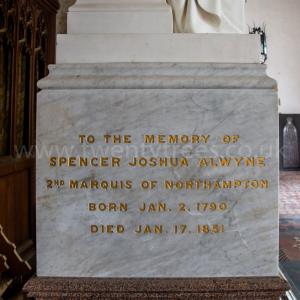
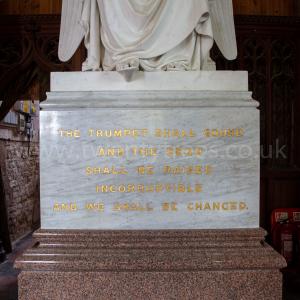
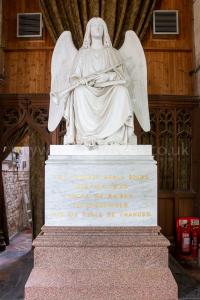
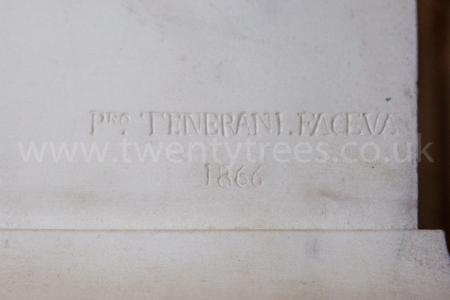
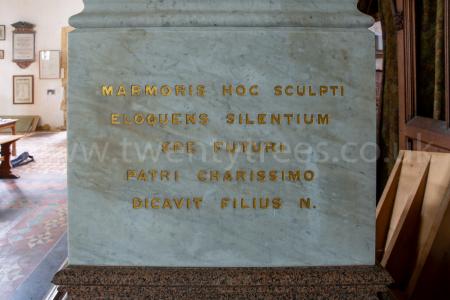
Culture, General Things, Dictionaries, Latin Dictionary, Dominus propitius esto nobis peccatorib
Dominus propitius esto nobis peccatorib. Father forgive our sins.
On 25 Mar 1440 Geoffrey Boleyn (age 60) died. Around 1414 Alice Bracton (age 29) died. Memorial brass in the floor of the nave of Church of St Peter and St Paul, Salle [Map]. It originally also had tiny figures representing their 5 sons and 4 daughters, but the inlay is lost. Inscription: Hic jacet Galfrid. Boleyn qui obt. 25 die mensis Martij 1440, et Alicie, uxor. ejus, et pueror. suorum, quorum a'i'ab; &c. Label: Dominus propitius esto nobis peccatorib. ie "Here lies Geoffrey Boleyn who died the 25th day of the month of March A.D. 1440, and Alice, his wife, and children, on whose souls may God have mercy Amen"
Geoffrey Boleyn:
Around 1380 he was born to Thomas Boleyn and Anne Jane Bracton.
Before 1406 Geoffrey Boleyn and Alice Bracton were married. They were first cousins. In 1408 Geoffrey Boleyn provided timber for the building of Church of St Peter and St Paul, Salle. The church was paid for by four Lords of the manor, Geoffrey Boleyn, Thomas Brigge, Thomas Roos and an unknown person, with newly acquired wealth from the wool trade.
In 1408 Geoffrey Boleyn provided timber for the building of Church of St Peter and St Paul, Salle. The church was paid for by four Lords of the manor, Geoffrey Boleyn, Thomas Brigge, Thomas Roos and an unknown person, with newly acquired wealth from the wool trade.
Alice Bracton: Around 1385 she was born to John Bracton at Salle, Norfolk.
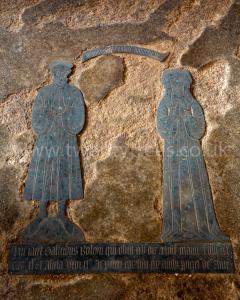
Culture, General Things, Dictionaries, Latin Dictionary, Dum Descendit Largitur
Dum Descendit Largitur. Dum = while, descendit = down, largitur = gives? If anoyone has a translation of this phrase we'd be very grateful if you shared it: email@twentytrees.co.uk.
Undated (around 1650?) monument to Rowland Woodward in the Church of St Leonard, Apethorpe [Map]. Black marble panel with pilasters enriched with rosettes, a crowned skull on the apron and a large cartouche of arms flanked by obelisks each inscribed 'Dum Descendit Largitur'; the arms are of Woodward impaling Grimsdith.
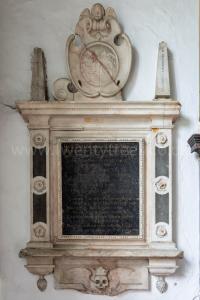
Culture, General Things, Dictionaries, Latin Dictionary, Eiusoem Nominis tertius
Eiusoem Nominis tertius. Of the third name.
On 07 Sep 1384 John Harsick III died. Brass in Church of St George, South Acre [Map] of John Harsick III and his wife Catherine Calthorpe holding hands. Great Helm with Feathers. Camail and Jupon Period. His coat of arms Harsick. Her showing  Harsick Arms impaled with Calthorp Arms. At his feet a lion couchant, at hers a dog couchant. Inscription: Hic iacet Dns. Johes. Harsick Miles eiusoem Nominis tertius, qui obiit Serto die Septembris Ano Dni. Mccclxxxiv. cuius anime propicictur Deus Amen, et Domina Katherina Uxor.
Harsick Arms impaled with Calthorp Arms. At his feet a lion couchant, at hers a dog couchant. Inscription: Hic iacet Dns. Johes. Harsick Miles eiusoem Nominis tertius, qui obiit Serto die Septembris Ano Dni. Mccclxxxiv. cuius anime propicictur Deus Amen, et Domina Katherina Uxor.

John Harsick III: he was born to John Harsick II. In 1377 he was appointed High Sheriff of Norfolk. In or before 1384 John Harsick III and Catherine Calthorpe were married. In 1384 John Harsick III made his will on the Wednesday after the decollation of St. John Baptist. He bequeaths several legacies to the Lady Catharine his wife, his eldest son John, and to his son Eudo Harsick, the manor of Stanhow in Norfolk for life, remainder to his son Brian.
Catherine Calthorpe: she was born to Bartholemew Calthorpe.
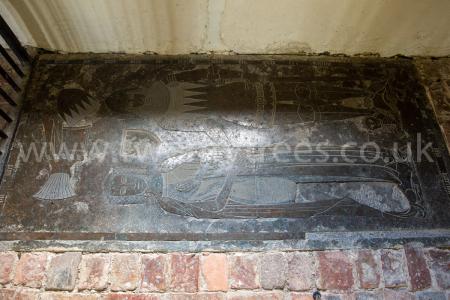
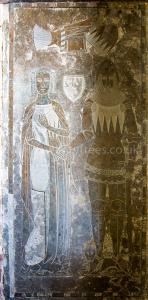
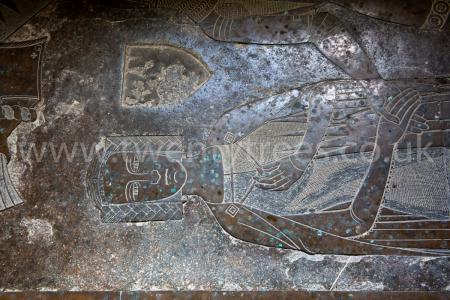
Culture, General Things, Dictionaries, Latin Dictionary, Eloquens silentium
Eloquens silentium. Silently speaks.
After 17 Jan 1851. Monumen to Spencer Compton 2nd Marquess Northampton (deceased). Angel of the Resurrection sculpted by Pietro Tenerani (age 61) in 1866. The quote from First Letter to the Corinthians Chapter 15 Verse 52. The inscription on the side Marmoris hoc sculpti eloquens silentium spe futuri patri charissimo dicavit filius.





Culture, General Things, Dictionaries, Latin Dictionary, Encaenia
Encaenia is an academic or sometimes ecclesiastical ceremony, usually performed at colleges or universities.
Culture, General Things, Dictionaries, Latin Dictionary, Eodem Die
Eodem Die. to the same place.
Culture, General Things, Dictionaries, Latin Dictionary, Et iterum vale
Et iterum vale. And goodbye again.
Ellis' Letters S1 V2 Letter CII. Cardinal Wolsey (age 55) in his distress to Thomas Cromwell (age 43). [Around Nov 1528]
WnBMRjQeMS. COTTON. VESP. F. xiii. foL J6. Orig.
The Letter here presented to the reader was printed some years ago, by the Editor of the present Volumes, in the Archaeologia of the Society of Antiquaries.
Wolsey, who knew the talents of Cromwell, seems to have placed great reliance on his integrity and affection. Cromwell, according to Cavendish in his life of Wolsey, became a member of the lower House of Parliament in the month of November 1529, within a short time from which the present Letter must have been written. He appears to have protected his master in the Lower House with great dexterity and address.
Fox, in his Acts and Monuments, has related an anecdote of Cromwell which may be worth introducing here. It occurred in 1540, at the table of Archbishop Cranmer, when certain guests were making a comparison of the qualities of the two prelates Cranmer and Wolsey. " The Lord Cromwell being somewhat touched to hear the Cardinal's service cast in his teeth," said " that he could not deny but he was servant sometime to Cardinal Wolsey, neither did repent the same, for he received of him both fee, meate, and drinke, and other commodities : but yet he was never so farre in love with him as to have waited on him to Rome if he had been chosen Pope."
Myn owne enterly belouyd Cromwell, I beseche yow, as ye loue me and wyl euyr do any thyng for me, repare hyther thys day as sone as the Parlement ys brokyn vp, leyng aparte all thyngs for that tyme; for I wold nut onely commynycat thyngs vnto yow wherin for my comfort and relief I wold haue your good, sad, dyscret aduyse and counsell, but also opon the same commytt sertyng thyngs requyryng expedicion to yow, on my behalf to be solycy tyd : this, I pray yow therfor, to hast your commyng hyther assafore, with owt omyttyng so to do as ye tendyr my socor, reliff, and comfort, and quyetnes of mynde. And thus fare ye wel : from Asher, in hast, thys Satyrday, in the mornyng, with the rude hande and sorowfull hert of your assuryd louer
T. CARLIS EBOR.
I haue also serteyn thyngs consernyng yowr sylf wych I am suere ye wolbe glad to here and knowe : fayle not therfor to be here thys nygth, ye may retorne early in the mornyng ageyn yf nede shul so requyre. Et iterum vale.
Mr. Agtlsteyna shewyd me how ye had wryttyn onto me a Lettre wherin ye shuld adu'tyse me of the commyng hyther of the Duke of Norfolke: I assure yow ther cam to my hands no suche Lettre.
Note a. Augustinus de Augustinis, or Mr. Augustine as he is more usually called, was the Cardinal's Physician. In the Cottonian Manuscript Titus B. I. fol. 365. there is a Letter of his, to Thomas Cromwell, in Italian, requiring speedy medical assistance. apparently tor Cardinal Wolsey. It it dated Asher, Jan. 19th 1529-30.
Culture, General Things, Dictionaries, Latin Dictionary, Ex Libris
Ex Libris. an inscription in or on a book, to indicate the owner; bookplate.
In 1616 Anne Keilway Baroness Harington (age 62) bequeathed to Oakham, Rutlandshire Parish Library around 200 religious works in Latin and Greek devoted to theology, history, ecclesiastical and canon law intended for the use of the Vicar and local clergy. It is one of the earliest known parochial libraries. The books were bound in leather tooled with the Harington  Harrington Arms knot in gilt, with the Latin ex libris
Harrington Arms knot in gilt, with the Latin ex libris
Culture, General Things, Dictionaries, Latin Dictionary, Ex-post facto
Chronicle of Greyfriars. 06 Apr 1532. Also this yere was a coke boylyd in a cauderne in Smythfeld for he wolde a powsynd the byshoppe of Rochester Fycher (age 62) with dy vers of hys servanttes, and he was lockyd in a chayne and pullyd up and downe with a gybbyt at dyvers tymes tyll he was dede.
Note. Poisoning of the household of the bishop of Rochester, and the punishment by Boiling. This crime occasioned great popular excitement at the time, which was probably increased both by the supposition that the life of the bishop (John Fisher) had been attempted, and by the rumour that many of the poor which had partaken of his alms had died, which is directly asserted as the fact by Stowe. Such, however, was not actually the case : only one of the episcopal household, and one poor widow, lost their lives. As the parliament was sitting, the matter was brought before it, and an act (22 Hen. VIII. c. 9) was passed, reciting that " now in the tyme of this presente parliament, that is to saye, in the xviijth daye of Februarye in the xxij. yere of his moste victorious reygn, one Richard Roose late of Rouchester in the countie of Kent, coke, otherwyse called Richard Coke, of his moste wyked and dampnable dysposicyon dyd caste a certyne venym or poyson into a vessell replenysshed with yeste or barme stondyng in the kechyn of the Reverende Father in God John Bysshopp of Rochester at his place in Lamebyth Marsshe, wyth whych yeste or barme and other thynges convenyent porrage or gruell was forth wyth made for his famylye there beyng, wherby nat only the nombre of xvij. persons of his said famylie whych dyd eate of that porrage were mortally enfected and poysoned, and one of them, that is to say, Benett Curwen gentylman therof is deceassed, but also certeyne pore people which resorted to the sayde Bysshops place and were there charytably fedde wyth the remayne of the saide porrage and other vytayles, were in lyke wyse infected, and one pore woman of them, that is to saye, Alyce Tryppytt wydowe, is also thereof now deceassed : our sayde Sovereign Lorde the Kynge, of hys blessed disposicion inwardly abhorryng all such abhomynable offences because that in maner no persone can lyve in suertye out of daunger of death by that meane yf practyse therof should not be exchued, hath ordeyned and enacted by auctorytie of thys presente parlyament that the sayde poysonyng be adjudged and denied as high treason. And that the sayde Richard for the sayd murder and poysonynge of the said two persones as is aforesayde by auctoritie of this presente parlyament shall stande and be attaynted of highe treason : And by cause that detestable offence nowe newly practysed and comytted requyreth condygne punysshemente for the same; It is ordeyned and enacted by auctoritie of this present parlyament that the said Richard Roose shalbe therfore boyled to deathe withoute havynge any advauntage of his clargie. And that from hensforth every wylfull murder of any persone or persones by any whatsoever persone or persones herafter to be comytted and done by meane or waye of poysonyng shalbe reputed, denied, and juged in the lawe to be highe treason; And that all and every persone or persones which hereafter shalbe lawfully indyted, appeled and attaynted or condemned of such treson for any maner poysonyng shall not be admytted to the benefyte of hys or theyre clargye, but shalbe immedyatly committed to execucion of deth by boylynge for the same."
It has been supposed that this was an ex-post facto enactment, so far as Richard Roose was concerned; and yet we find by the present chronicle, p. 30, that, at an earlier period of Henry's reign, nine years before, a man was sodden in a cauldron at Smithfield, "because he would have poisoned divers persons." Therefore the same punishment appears to have previously attached to the offence. It has not, however, been traced to still earlier times. (See "Notes and Queries," 1852, vol. v. pp. 32, 112, 184.) A third instance of its execution has been found in the chronicle of King's Lynn, about the same time as Roose's case: "1531. This year here was a maid boiled to death in the Market-place for poisoning her mistress." (Ibid. p.355.) A fourth occurs in 1542, which is briefly mentioned in p. 45 of the present volume, and somewhat differently by Stowe, as follows : " The 17 March [i.e. a week later] Margaret Davy, a maid, was boiled in Smithfield for poisoning of the household that she had dwelled in." Sir Walter Scott, in his Border Minstrelsy (notes to Leyden's ballad of Lord Soulis), gives this passage with the erroneous date of 1524, following a misprint in Stowe's margin. The punishment by boiling is supposed to have been repealed by the statute 1 Edward VI. c. 12, by which all new treasons were abolished.
Culture, General Things, Dictionaries, Latin Dictionary, Experto Crede
Experto Crede. Trust in exprience.
Henry Chaplin A Memoir: Youth VI. Mr. Chaplin did not for the moment feel disposed for the company even of his best friend and mentor, and went straight up to the Reay Forest, which he had rented for the deer stalking.
A month later Lord Henry writes:
If you will only open your eyes to the whole truth, and nothing but the truth, then the wound will become callous at once. Otherwise, neither Scotland nor exercise, nor three score years either, will heal such a sore. "Experto Crede".
The healthy interest of sport, fresh air and exercise, wise counsel and the warm family affection which surrounded him, helped to restore his spirits, and his naturally sane outlook upon life was not long in reappearing. Ultimately he decided to go to India for a year, again with Sir Frederick Johnstone, to seek escape from the speculations of the curious, and to complete his recuperation of mind in new surroundings and the novel adventure of tiger shooting.
Culture, General Things, Dictionaries, Latin Dictionary, Fiat Voluntas
Fiat Voluntas. Thy will be done.
1581. Church of St John The Baptist, Kinlet [Map]. Monument to George Blount (age 68) and Constance Talbot.

The following Epitaph is engraved on a white marble slab, by the side of the large Tudor Monument, which contains the kneeling figures of Sir George and Constantia Talbot, his wife, and their two children. Underneath is the entombed figure. The monument is richly decorated with the quarterings of  Blount Arms Blount and
Blount Arms Blount and  Talbot Arms Talbot. [Latin Epitaph at Kinlet translated by the late Stanley Leighton, M.A., F.S.A.]
Talbot Arms Talbot. [Latin Epitaph at Kinlet translated by the late Stanley Leighton, M.A., F.S.A.]
HERE LYETH THE BODY OF SIR GEORGE BLOUNT KNIGHT WHICH WAS LORDE OF KINLET WHO DIED IN THE YEARE OF OURE LORD GOD 1581 HERE THYRE CHILDREN BE JOHN AND ALSO DORETHY.
FIAT VOLVNTAS DEI 1584 ANNO DOMINI. AVOVS SERVIR JESUIS
Laid in this tomb is Blount of noble race, Ennobled by light of his own, and BY THE light of his father he was; His lineage most high, knightly by either parent, Worthy of these was the son's knightly name; Arms, and the charger fiery were his delight, on the day of battle, But the palace of his King delighted his youth, In manhood Scotland and the realms of France Felt his generosity in war; to both he was a terror; His neighbour's quarrels and disputes he settled all, At home he was a man of peace, Nor did he make unfitting nuptial for himself, The daughter of a knight he wedded of equal lineage, Who bore two children, of whom a daughter (age 47) lives, The son before his father sought the realms above; After his son's death, he gives many lands to his nephew And makes him the heir of this very place - Rowland Lacon who laid his lifeless body in a tomb But his spirit the realms above hold. This Lacon an Esquire in filial memory of love This record raised. His nephew and his heir
CHRIST S LIFE'S AIM.
Be near good Christ to England, To Prince, to Nobles, And to all other Inhabitants; Good Christ, I pray grant Peace - For by this the life of men is quiet - By this, their journey safe And all good things do multiply. By strife, what has been gotten By great labor, melts away, So to Thine own give everlasting peace - May virtue which is learning's light, Be given too, and blessings come - Far off be what, At any time may hurt.
Constance Talbot: Around 1517 she was born to John Talbot of Albrighton and Margaret Troutbeck On 30 Mar 1533 George Blount and she were married. Around 1565 Constance Talbot died.
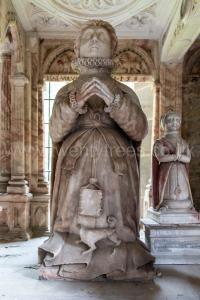
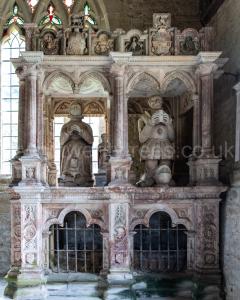
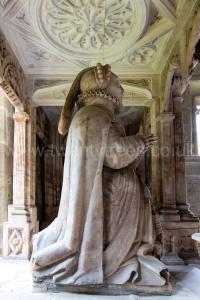
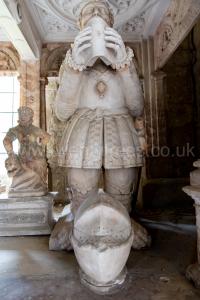
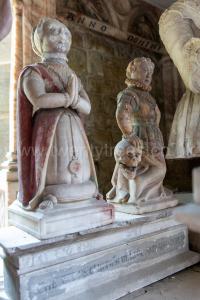
Culture, General Things, Dictionaries, Latin Dictionary, Filia
Filia. Daughter.
On 11 Jul 1673 Penelope Barkham (age 8) died. She was buried at Church of St George, South Acre [Map]. Inscription: Hic jacet Penelope, filia Domini Edwardi Barkham Baronetti (age 45), et Franciscæ (age 40) uxor is sue, qui quidem Penelope, Ætate Puellula, sed Prudentiâ, Pietate, Virtute Matrona omnibus satis, Parentibus nimis, et Deo maxime chara, terras reliquit, ad Nuptias Agni vocata Julij 11, 1673, Annoq; Ætatis suæ, Octavo.
Penelope Barkham: In 1665 she was born to Edward Barkham 2nd Baronet and Frances Napier Lady Barkham.
Edward Barkham 2nd Baronet:
In 1628 he was born to Edward Barkham 1st Baronet and Francis Berney.
On 28 Jun 1660 Edward Barkham 2nd Baronet and Frances Napier Lady Barkham were married. She by marriage Edward Barkham 2nd Baronet. She a great x 5 granddaughter of King Henry VII of England and Ireland.
On 02 Aug 1667 Edward Barkham 1st Baronet died. He was buried at Church of St George, South Acre. His son Edward Barkham 2nd Baronet succeeded 2nd Baronet Barkham of South Acre in Norfolk. Frances Napier Lady Barkham by marriage Lady Barkham of South Acre in Norfolk.
In 1688 Edward Barkham 2nd Baronet died. His brother William Barkham 3rd Baronet succeeded 3rd Baronet Barkham of South Acre in Norfolk.

On 18 Aug 1696 Bourchier Wrey 4th Baronet (deceased) was buried at St Peter's Church, Tawstock [Map]. Inscription: Juxta hoc Marmor depositæ sunt Reliquiæ Bourchieri Wrey Baronetti Honorabilis ordinis Balnei Mitiris Egregys animi dotibus Fortitudine præfertim et amicitia Insignis Ecclesiae pietate, Regi Fidelitate Conspicui filius erat naru Maximus Chichesteri Wrey de Trebeigh, in agro Cornubienfi Baronetti, E Conjuge Comitissa Middlesex (age 65) Filia Edvardi Comitis Bathon de antigua et perillustri Bourchierum strirpe nuper extincta Obijt 28vo die July Anno Domu 1696 Ætatis 44to Spe Beatae Resurrectionis.
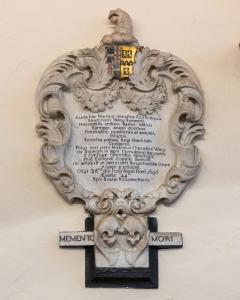
Culture, General Things, Dictionaries, Latin Dictionary, Filium
Filium. Sons.
Culture, General Things, Dictionaries, Latin Dictionary, Filius
Filius. Son.
1260 Annals Dunstable. 1260. In the year of grace 1260.Henry King of England (age 52), son of King John, etc.
Original Latin Text:
Anno gratiae MCCLX. Henricus rex Angliae (age 52), filius regis Johannis, pace firmata cum rege Franciae, ibidem per longum tempus moram traxit; nec in Angliam redire curavit, donec episcopi et magnates Angliae ei literatorie mandaverunt quod reverti in Angliam properaret; quod si non faceret, ad placitum suum in Anglia non rediret. Quo audito, rex in se reversus, in Angliam rediit; sed quidam malitiosi falsis rumoribus inter patrem et filium suum Edwardum discordiam seminavervmt, asserentes quod dictus Edwardus et consiliarii sui guerram domino regi movere procurarunt; propter quod dominus rex supra modum iratus, multos milites de partibus transmarinis usque Londoniam secum adduxit; et eis ultra pontem dimissis in partibus Sureiae, ipse civitatem Londonise ingressus est, et ibi aliquandiu moram fecit, portis civitatis firmatis et seratis, apposuit custodes, ut nullus nisi ab eo licentiatus ingrederetur.
Comes vero Gloverni, et Johannes Maunsel, et quidam alii qui de concilio regis fuerunt, ad placitum suum ingressum et egressum habuerunt.
Rex vero proliibuit, ne filius suus Edwardus, nec aliquis qui de consilio suo extiterat, coram ipso venirent, dicens, "Coram me non appareat filius mens Edwardus, quia si eum videro, quin ipsum osculer me non cohibebo.".
Tandem, amore paterno commotus, et magnatum precibus devictus, ipsum ad osculum pacis recepit, et regina mater sua similiter, quae, ut dicebatur, causa totius malitis extiterat.
Dum ista aguntur, quantos honores et quantas expensas, omnibus qui interesse voluerint, dominus Edwardus fecerit, lingua vix potest explicare.
After 17 Jan 1851. Monumen to Spencer Compton 2nd Marquess Northampton (deceased). Angel of the Resurrection sculpted by Pietro Tenerani (age 61) in 1866. The quote from First Letter to the Corinthians Chapter 15 Verse 52. The inscription on the side Marmoris hoc sculpti eloquens silentium spe futuri patri charissimo dicavit filius.





Culture, General Things, Dictionaries, Latin Dictionary, Hic jacet
Hic jacet. Here lies, here is buried.
On 07 Sep 1384 John Harsick III died. Brass in Church of St George, South Acre [Map] of John Harsick III and his wife Catherine Calthorpe holding hands. Great Helm with Feathers. Camail and Jupon Period. His coat of arms Harsick. Her showing  Harsick Arms impaled with Calthorp Arms. At his feet a lion couchant, at hers a dog couchant. Inscription: Hic iacet Dns. Johes. Harsick Miles eiusoem Nominis tertius, qui obiit Serto die Septembris Ano Dni. Mccclxxxiv. cuius anime propicictur Deus Amen, et Domina Katherina Uxor.
Harsick Arms impaled with Calthorp Arms. At his feet a lion couchant, at hers a dog couchant. Inscription: Hic iacet Dns. Johes. Harsick Miles eiusoem Nominis tertius, qui obiit Serto die Septembris Ano Dni. Mccclxxxiv. cuius anime propicictur Deus Amen, et Domina Katherina Uxor.

John Harsick III: he was born to John Harsick II. In 1377 he was appointed High Sheriff of Norfolk. In or before 1384 John Harsick III and Catherine Calthorpe were married. In 1384 John Harsick III made his will on the Wednesday after the decollation of St. John Baptist. He bequeaths several legacies to the Lady Catharine his wife, his eldest son John, and to his son Eudo Harsick, the manor of Stanhow in Norfolk for life, remainder to his son Brian.
Catherine Calthorpe: she was born to Bartholemew Calthorpe.



On 25 Mar 1440 Geoffrey Boleyn (age 60) died. Around 1414 Alice Bracton (age 29) died. Memorial brass in the floor of the nave of Church of St Peter and St Paul, Salle [Map]. It originally also had tiny figures representing their 5 sons and 4 daughters, but the inlay is lost. Inscription: Hic jacet Galfrid. Boleyn qui obt. 25 die mensis Martij 1440, et Alicie, uxor. ejus, et pueror. suorum, quorum a'i'ab; &c. Label: Dominus propitius esto nobis peccatorib. ie "Here lies Geoffrey Boleyn who died the 25th day of the month of March A.D. 1440, and Alice, his wife, and children, on whose souls may God have mercy Amen"
Geoffrey Boleyn:
Around 1380 he was born to Thomas Boleyn and Anne Jane Bracton.
Before 1406 Geoffrey Boleyn and Alice Bracton were married. They were first cousins. In 1408 Geoffrey Boleyn provided timber for the building of Church of St Peter and St Paul, Salle. The church was paid for by four Lords of the manor, Geoffrey Boleyn, Thomas Brigge, Thomas Roos and an unknown person, with newly acquired wealth from the wool trade.
In 1408 Geoffrey Boleyn provided timber for the building of Church of St Peter and St Paul, Salle. The church was paid for by four Lords of the manor, Geoffrey Boleyn, Thomas Brigge, Thomas Roos and an unknown person, with newly acquired wealth from the wool trade.
Alice Bracton: Around 1385 she was born to John Bracton at Salle, Norfolk.

On 11 Jul 1673 Penelope Barkham (age 8) died. She was buried at Church of St George, South Acre [Map]. Inscription: Hic jacet Penelope, filia Domini Edwardi Barkham Baronetti (age 45), et Franciscæ (age 40) uxor is sue, qui quidem Penelope, Ætate Puellula, sed Prudentiâ, Pietate, Virtute Matrona omnibus satis, Parentibus nimis, et Deo maxime chara, terras reliquit, ad Nuptias Agni vocata Julij 11, 1673, Annoq; Ætatis suæ, Octavo.
Penelope Barkham: In 1665 she was born to Edward Barkham 2nd Baronet and Frances Napier Lady Barkham.
Edward Barkham 2nd Baronet:
In 1628 he was born to Edward Barkham 1st Baronet and Francis Berney.
On 28 Jun 1660 Edward Barkham 2nd Baronet and Frances Napier Lady Barkham were married. She by marriage Edward Barkham 2nd Baronet. She a great x 5 granddaughter of King Henry VII of England and Ireland.
On 02 Aug 1667 Edward Barkham 1st Baronet died. He was buried at Church of St George, South Acre. His son Edward Barkham 2nd Baronet succeeded 2nd Baronet Barkham of South Acre in Norfolk. Frances Napier Lady Barkham by marriage Lady Barkham of South Acre in Norfolk.
In 1688 Edward Barkham 2nd Baronet died. His brother William Barkham 3rd Baronet succeeded 3rd Baronet Barkham of South Acre in Norfolk.

Culture, General Things, Dictionaries, Latin Dictionary, In foro conscientiae
In foro conscientiae. Privately or morally rather than legally.
Letter to Archbishop Mandell Crichton 05 Apr 1887. I was disappointed at not learning from you what I never could find out, how that peculiar discipline established itself at Rome between the days of Kempis and of Erasmus. It would not have appeared mysterious or esoteric to your readers if I had said a little more about it. Nor is this a point of serious difference. When you come to talk of the crisis I do not doubt you will say how it came about. Probably you will not give quite the same reasons that occur to me, because you are more sure than I am that the breach was inevitable. But I did think myself justified in saying that these two volumes do not contain an account of some of the principal things pertaining to the Papacy during the Reformation, and in indicating the sort of explanation I desiderate in Vol. V.
What is not at all a question of opportunity or degree is our difference about the Inquisition. Here again I do not admit that there is anything esoteric in my objection. The point is not whether you like the Inquisition-I mean that is a point which the H.R. may mark, but ought not to discuss-but whether you can, without reproach to historical accuracy, speak of the later mediaeval papacy as having been tolerant and enlightened. What you say on that point struck me exactly as it would strike me to read that the French Terrorists were tolerant and enlightened, and avoided the guilt of blood. Bear with me whilst I try to make my meaning quite clear.
We are not speaking of the Papacy towards the end of the fifteenth or early sixteenth century, when, for a couple of generations, and down to 1542,there was a decided lull in the persecuting spirit. Nor are we speaking of the Spanish Inquisition, which is as distinct from the Roman as the Portuguese, the Maltese, or the Venetian. I mean the Popes of the thirteenth and fourteenth centuries, from Innocent III down to the time of Hus. These men instituted a system of Persecution, with a special tribunal, special functionaries, special laws. They carefully elaborated, and developed, and applied it. They protected it with every sanction, spiritual and temporal. They inflicted, as far as they could, the penalties of death and damnation on everybody who resisted it. They constructed quite a new system of procedure, with unheard of cruelties, for its maintenance. They devoted to it a whole code of legislation, pursued for several generations, and not to be found in [ ].
But although not to be found there it is to be found in books just as common; it is perfectly familiar to every Roman Catholic student initiated in canon law and papal affairs; it has been worn threadbare in a thousand controversies; it has been constantly attacked, constantly defended, and never disputed or denied, by any Catholic authority. There are some dozens of books, some of them official, containing the particulars.
Indeed it is the most conspicuous fact in the history of the mediaeval papacy, just as the later Inquisition, with what followed, is the most conspicuous and characteristic fact in the history and record of the modern papacy. A man is hanged not because he can or cannot prove his claim to virtues, but because it can be proved that he has committed a particular crime. That one action overshadows the rest of his career. It is useless to argue that he is a good husband or a good poet. The one crime swells out of proportion to the rest. We all agree that Calvin was one of the greatest writers, many think him the best religious teacher, in the world. But that one affair of Servetus outweighs the nine folios, and settles, by itself, the reputation he deserves. So with the mediaeval Inquisition and the Popes that founded it and worked it. That is the breaking point, the article of their system by which they stand or fall.
Therefore it is better known than any other part of their government, and not only determines the judgment but fills the imagination, and rouses the passions of mankind. I do not complain that it does not influence your judgment. Indeed I see clearly how a mild and conciliatory view of Persecution will enable you to speak pleasantly and inoffensively of almost all the performers in your list, except More and Socinius; whilst a man with a good word for More and Socinius would have to treat the other actors in the drama of the Reformation as we treat the successive figures on the inclined plane of the French Revolution, from Dumouriez to Barras. But what amazes and disables me is that you speak of the Papacy not as exercising a just severity, but as not exercising any severity. You do not say, these misbelievers deserved to fall into the hands of these torturers and Fire-the-faggots; but you ignore, you even deny, at least implicitly, the existence of the torture-chamber and the stake.
I cannot imagine a more inexplicable error, and I thought I had contrived the gentlest formula of disagreement in coupling you with Cardinal Newman.
The same thing is the case with Sixtus IV and the Spanish Inquisition. What you say has been said by Hefele and Gams and others. They, at least, were in a sort, avowed defenders of the Spanish Inquisition. Hefele speaks of Ximenes as one might speak of Andrewes or Taylor or Leighton. But in what sense is the Pope not responsible for the constitution by which he established the new tribunal? If we passed a law giving Dufferin powers of that sort, when asked for, we should surely be responsible. No doubt, the responsibility in such a case is shared by those who ask for a thing. But if the thing is criminal, if, for instance, it is a license to commit adultery, the person who authorises the act shares the guilt of the person who commits it. Now the Liberals think Persecution a crime of a worse order than adultery, and the acts done by Ximenes considerably worse than the entertainment of Roman courtesans by Alexander VI. The responsibility exists whether the thing permitted be good or bad. If the thing be criminal, then the authority permitting it bears the guilt. Whether Sixtus is infamous or not depends on our view of persecution and absolutism. Whether he is responsible or not depends simply on the ordinary evidence of history.
Here, again, what I said is not in any way mysterious or esoteric. It appeals to no hidden code. It aims at no secret moral. It supposes nothing and implies nothing but what is universally current and familiar. It is the common, even the vulgar, code I appeal to.
Upon these two points we differ widely; still more widely with regard to the principle by which you undertake to judge men. You say that people in authority are not [to] be snubbed or sneezed at from our pinnacle of conscious rectitude. I really don't know whether you exempt them because of their rank, or of their success and power, or of their date. The chronological plea may have some little value in a limited sphere of instances. It does not allow of our saying that such a man did not know right from wrong, unless we are able to say that he lived before Columbus, before Copernicus, and could not know right from wrong. It can scarcely apply to the centre of Christendom, 1500 after the birth of our Lord. That would imply that Christianity is a mere system of metaphysics, which borrowed some ethics from elsewhere. It is rather a system of ethics which borrowed its metaphysics elsewhere. Progress in ethics means a constant turning of white into black and burning what one has adored. There is little of that between St. John and the Victorian era.
But if we might discuss this point until we found that we nearly agreed, and if we do argue thoroughly about the impropriety of Carlylese denunciations, and Pharisaism in history, I cannot accept your canon that we are to judge Pope and King unlike other men, with a favourable presumption that they did no wrong. If there is any presumption it is the other way against holders of power, increasing as the power increases. Historic responsibility has to make up for the want of legal responsibility. Power tends to corrupt and absolute power corrupts absolutely. Great men are almost always bad men, even when they exercise influence and not authority: still more when you superadd the tendency or the certainty of corruption by authority. There is no worse heresy than that the office sanctifies the holder of it. That is the point at which the negation of Catholicism and the negation of Liberalism meet and keep high festival, and the end learns to justify the means. You would hang a man of no position, like Ravaillac; but if what one hears is true, then Elizabeth asked the gaoler to murder Mary, and William III ordered his Scots minister to extirpate a clan. Here are the greater names coupled with the greater crimes. You would spare these criminals, for some mysterious reason. I would hang them, higher than Haman, for reasons of quite obvious justice; still more, still higher, for the sake of historical science.
The standard having been lowered in consideration of date, is to be still further lowered out of deference to station. Whilst the heroes of history become examples of morality, the historians who praise them, Froude, Macaulay, Carlyle, become teachers of morality and honest men. Quite frankly, I think there is no greater error. The inflexible integrity of the moral code is, to me, the secret of the authority, the dignity, the utility of history. If we may debase the currency for the sake of genius, or success, or rank, or reputation, we may debase it for the sake of a man's influence, of his religion, of his party, of the good cause which prospers by his credit and suffers by his disgrace. Then history ceases to be a science, an arbiter of controversy, a guide of the wanderer, the upholder of that moral standard which the powers of earth, and religion itself, tend constantly to depress. It serves where it ought to reign; and it serves the worst better than the purest.
Let me propose a crux whereby to part apologetic history from what I should like to call conscientious history: an Italian government was induced by the Pope to set a good round price on the heads of certain of its subjects, presumably Protestants, who had got away. Nobody came to claim the reward. A papal minister wrote to the government in question to say that the Holy Father was getting impatient, and hoped to hear soon of some brave deed of authentic and remunerated homicide. The writer of that letter lies in the most splendid mausoleum that exists on earth; he has been canonized by the lawful, the grateful, the congenial authority of Rome; his statue, in the attitude of blessing, looks down from the Alps upon the plain of Lombardy; his likeness is in our churches; his name is upon our altars; his works are in our schools. His editor specially commends the letter I have quoted; and Newman celebrates him as a glorious Saint.
Here is all you want, and more. He lived many a year ago; he occupied the highest stations, with success and honour; he is held in high, in enthusiastic reverence by the most intelligent Catholics, by converts, by men who, in their time, have drunk in the convictions, haply the prejudices, of Protestant England; the Church that holds him up as a mirror of sanctity stands and falls with his good name; thousands of devout men and women would be wounded and pained if you call him an infamous assassin.
What shall we call him? In foro conscientiae, what do you think of the man or of his admirers? What should you think of Charlotte Corday if, instead of Marat, she had stabbed Borromeo? At what stage of Dante's pilgrimage should you expect to meet him?
And whereas you say that it is no recommendation in my eyes to have sympathy with the Roman system in its essentials, though you did not choose those terms quite seriously, one might wonder what these essentials are. Is it essential-for salvation within the communion of Rome-that we should accept what the canonization of such a saint implies, or that we should reject it? Does Newman or Manning, when he invokes St. Charles [Borromeo], act in the essential spirit of the Roman system, or in direct contradiction with it? To put it in a walnutshell: could a man be saved who allowed himself to be persuaded by such a chain of argument, by such a cloud of witnesses, by such a concourse of authorities, to live up to the example of St. Charles?
Of course I know that you do sometimes censure great men severely. But the doctrine I am contesting appears in your preface, and in such places as where you can hardly think that a pope can be a poisoner. This is a far larger question of method in history than what you mean when you say that I think you are afraid to be impartial; as if you were writing with purposes of conciliation and in opposition to somebody who thinks that the old man of the Seven Mountains is worse than the old man of one. I do not mean that, because your language about the Inquisition really baffles and bewilders me. Moreover, you are far more severe on Sixtus about the Pazzi than others; more, for instance, than Capponi or Reumont. And my dogma is not the special wickedness of my own spiritual superiors, but the general wickedness of men in authority-of Luther and Zwingli and Calvin and Cranmer and Knox, of Mary Stuart and Henry VIII, of Philip II and Elizabeth, of Cromwell and Louis XIV, James and Charles and William, Bossuet and Ken. Before this, it is a mere detail that imperfect sincerity is a greater reproach in divines than in laymen, and that, in our Church, priests are generally sacrilegious; and sacrilege is a serious thing. Let me add one word to explain my objection to your use of materials. Here is Pastor, boasting that he knows much that you do not. He does not stand on a very high level, and even his religion seems to be chiefly ecclesiastical. But I do apprehend that his massive information will give him an advantage over you when he gets farther. In that light I regret whatever does not tend to increase the authority of a work written on such Culturstufe as yours. I did not mean to overlook what may be urged per contra. When you began there was no rival more jealous than Gregorovius. That is not the case now. I should have wished your fortification to be strengthened against a new danger.
I am sure you will take this long and contentious letter more as a testimony of heart confidence and respect than of hostility-although as far as I grasp your method I don't agree with it. Mine seems to me plainer and safer; but it has never been enough to make me try to write a history, from mere want of knowledge. I will put it into canons, leaving their explanation and development to you.
I remain, yours most sincerely
Culture, General Things, Dictionaries, Latin Dictionary, Incipit
Incipit. The first line of a text.
Culture, General Things, Dictionaries, Latin Dictionary, Le roy le veut
Le roy le veut. The King wills it.
Letters of Horace Walpole. 05 Aug 1752. Here our woes increase. The roads row bad beyond all badness, the night dark beyond all darkness, our guide frightened beyond all frightfulness. However, without being at all killed, we got UP, or down,-I forget which, it was so dark,-a famous precipice called Silver Hill, and about ten at night arrived at a wretched village called Rotherbridge. We had still six miles hither, but determined to stop, as it would be a pity to break our necks before we had seen all we intended. But alas! there was only one bed to be had: all the rest were inhabited by smugglers, whom the people of the house called mountebanks; and with one of whom the lady of the den told Mr. Chute he might lie. We did not at all take to this society, but, armed with links and lanthems, set out again upon this impracticable journey. At two o'clock in the morning we got hither to a still worse inn, and that crammed with excise officers, one of whom had just shot a smuggler. However, as we were neutral powers, we have passed safely through both armies hitherto, and can give you a little farther history of our wandering through these mountains, where the young gentlemen are forced to drive their curricles with a pair of oxen. the only morsel of good road we have found, was what even the natives had assured us was totally impracticable: these were eight miles to Hurst Monceaux.338 It is seated at the end of a large vale, five miles in a direct line to the sea, with wings of blue hills covered with wood, one of which falls down to the in a sweep of a hundred acres. The building, for the convenience of water to the moat, sees nothing at all; indeed it is entirely imagined on a plan of defence, with drawbridges actually in being, round towers, watch-towers mounted on them, and battlements pierced for the passage of arrows from long bows. It was built in the time of Henry VI, and is as perfect as the first day. It does not seem to have been ever quite finished, or at least that age was not arrived at the luxury of white-wash; for almost all the walls, except in the principal chambers, are in their native brickhood. It is a square building, each side about two hundred feet in length; a porch and cloister, very like Eton College; and the whole is much in the same taste, the kitchen extremely so, with three vast funnels to the chimneys going up on the inside. There are two or three little courts for offices, but no magnificence of apartments. It is scarcely furnished with a few necessary beds and chairs: one side has been sashed, and a drawing-room and dining-room and two or three rooms wainscoted by the Earl of Sussex, who married a natural daughter of Charles II. Their arms with delightful carvings by Gibbons-, particularly two pheasants, hang over the chimneys. Over the great drawing-room chimney is the first coat armour of the first Leonard, Lord Dacre, with all his alliances. Mr. Chute was transported, and called cousin with ten thousand quarterings.339 The chapel is small, and mean: the Virgin and seven long lean saints, ill done, remain in the windows. There have been four more, but seem to have been removed for light; and we actually found St. Catherine, and another gentlewoman with a church in her hand, exiled into the buttery. There remain two odd cavities, with very small wooden screens on each side the altar, which seem to have been confessionals. The outside is a mixture of gray brick and stone, that has a very venerable appearance. The drawbridges are romantic to a degree; and there is a dungeon, that gives one a delightful idea of living in the days of soccage and under such goodly tenures. They showed us a dismal chamber which they called Drummer's-hall, and suppose that Mr. Addison's comedy is descended from it. In the windows of the gallery over the cloisters, which leads all round to the apartments, is the device of the Fienneses, a wolf holding a baton with a scroll, Le roy le veut - an unlucky motto, as I shall tell you presently, to the last peer of that line. The estate is two thousand a year, and so compact as to have but seventeen houses upon it. We walked up a brave old avenue to the church, with ships sailing on our left hand the whole way. Before the altar lies a lank brass knight, knight William Fienis, chevalier, who obiit c.c.c.c.v. that is in 1405. By the altar is a beautiful tomb, all in our trefoil taste, varied into a thousand little canopies and patterns, and two knights reposing on their backs. These were Thomas, Lord Dacre, and his only son Gregory, who died sans issue. An old grayheaded beadsman of the family talked to us of a blot in the scutcheon; and we had observed that the field of the arms was green instead of blue, and the lions ramping to the right, contrary to order. This and the man's imperfect narrative let us into the circumstances of the personage before us; for there is no inscription. He went in a Chevy-chase style to hunt in a Mr. Pelham's (age 57)340 park at Lawton: the keepers opposed, a fray ensued, a man was killed. The haughty baron took the death upon himself, as most secure of pardon; but however, though there was no chancellor of the exchequer in the question, he was condemned to be hanged: Le roy le Vouloist.

Note 338. the ancient inheritance of Lord Dacre of the South.-E.
Note 339. Chaloner Chute, Esq, of the Vine, married Catherine, daughter of Richard, Lord Dacre.-E.
Note 340. At the date of this letter Mr. Pelham (age 57) was prime minister.
Culture, General Things, Dictionaries, Latin Dictionary, Legatus
A Legatus, anglicised as legate, was a high-ranking Roman military officer in the Roman Army, equivalent to a modern high-ranking general officer. Initially used to delegate power, the term became formalised under Augustus as the officer in command of a legion.
Culture, General Things, Dictionaries, Latin Dictionary, Longum
1260 Annals Dunstable. 1260. In the year of grace 1260.Henry King of England (age 52), son of King John, etc.
Original Latin Text:
Anno gratiae MCCLX. Henricus rex Angliae (age 52), filius regis Johannis, pace firmata cum rege Franciae, ibidem per longum tempus moram traxit; nec in Angliam redire curavit, donec episcopi et magnates Angliae ei literatorie mandaverunt quod reverti in Angliam properaret; quod si non faceret, ad placitum suum in Anglia non rediret. Quo audito, rex in se reversus, in Angliam rediit; sed quidam malitiosi falsis rumoribus inter patrem et filium suum Edwardum discordiam seminavervmt, asserentes quod dictus Edwardus et consiliarii sui guerram domino regi movere procurarunt; propter quod dominus rex supra modum iratus, multos milites de partibus transmarinis usque Londoniam secum adduxit; et eis ultra pontem dimissis in partibus Sureiae, ipse civitatem Londonise ingressus est, et ibi aliquandiu moram fecit, portis civitatis firmatis et seratis, apposuit custodes, ut nullus nisi ab eo licentiatus ingrederetur.
Comes vero Gloverni, et Johannes Maunsel, et quidam alii qui de concilio regis fuerunt, ad placitum suum ingressum et egressum habuerunt.
Rex vero proliibuit, ne filius suus Edwardus, nec aliquis qui de consilio suo extiterat, coram ipso venirent, dicens, "Coram me non appareat filius mens Edwardus, quia si eum videro, quin ipsum osculer me non cohibebo.".
Tandem, amore paterno commotus, et magnatum precibus devictus, ipsum ad osculum pacis recepit, et regina mater sua similiter, quae, ut dicebatur, causa totius malitis extiterat.
Dum ista aguntur, quantos honores et quantas expensas, omnibus qui interesse voluerint, dominus Edwardus fecerit, lingua vix potest explicare.
Culture, General Things, Dictionaries, Latin Dictionary, Marmoris hoc sculpti
Marmoris hoc sculpti. The block of stone from which this is sculpted.
After 17 Jan 1851. Monumen to Spencer Compton 2nd Marquess Northampton (deceased). Angel of the Resurrection sculpted by Pietro Tenerani (age 61) in 1866. The quote from First Letter to the Corinthians Chapter 15 Verse 52. The inscription on the side Marmoris hoc sculpti eloquens silentium spe futuri patri charissimo dicavit filius.





Culture, General Things, Dictionaries, Latin Dictionary, Martij
Martij. March.
Culture, General Things, Dictionaries, Latin Dictionary, Meis manibus
Meis manibus. With my hands.
Diary of a Dean by Merewether. 01 Aug 1849. Aug. 1st. The next day was to witness the assemblage of the neighbourhood to inspect Silbury; and this very picturesque event I have already described in the former paper. Our party occupied the morning, till the time of repairing to Silbury, in visiting the barrows lying near Beckhampton, between the Caine and Devizes roads. In some of these, very curious urns and remains had been discovered, some of which I shall describe hereafter; but most appeared to have been disturbed. One high up on the hill in the northern direction was examined, but without success. It would be an indication of ungrateful disrespect —for it could not he forgetfulness —were I to omit, though briefly, to record the employment of the evening of this day, and the route we took; albeit it were well to start somewhat earlier than we did, specially if so splendid a moon as conducted us home might not be reckoned upon. But then, as we had been very fully occupied during the day, some regard was needful to he had toward such discoveries as we might be able to make at the Archæological Hotel, calculated to recruit our exhausted strength, which being satisfactorily accomplished, we proceeded with a very docile pair of horses and driver, both desiderata in such an expedition, first to Oldbury Castle [Map], a splendid position, overlooking the rich vale of Caine, Chippenham, Christian Malford, and Malmsbury, and bearing in its entrenchments the characteristics of Roman occupation, enlarged possibly at some time on the south-west side, but very possibly having been previously a British position, and even subsequently occupied by later warriors. I possess an iron spear-head, and one of those curious circular stones with a hole in the centre, found here. Thence we cut across the down towards the Roman road, the Via Badonica leading from Cunetio [Map] to Aquæ-solis [Map], and which, on arriving at Silbury Hill, which it would otherwise have cut at one-third of its base, deflects its course. We cannot boast that any of the dii deœque minors much less Diana herself, Bivia, Trivia, or whatever she might here have been called of old, were very propitious to us; though, in truth, she made ample amende by her bright guidance, when it was subsequently so much needed. The devotees of Ceres had strangely cut up this ancient road; so that, to traverse it with its full complement was not so easy a matter, either to the wheels of our vehicle, to the poor animals who had to draw it, or, indeed, to its occupants; to say nothing of the conductor. So that we traced the ancient way on foot, and were ready, not unneeded, to replace in its vertical position our tottering and almost subverted equipage, at a spot where the descent to Calston below would have been facile enough per saltum, or per volutationem, for the road in this part runs on the very edge of the abrupt and steep precipice of the hill. After some time spent in these corrective and directive pursuits, having fairly landed the really patient driver on the turf, to seek in advance the summit of the hill, we again became viatores in the strict sense of the word, and in its cognate road, until we reached its junction with the famous Wansdyke, the high vallum of which, in most places from 30 to 40 ft. high, is here and for a considerable distance cut down to fill up the foss and form the road. From this point our explorations were by moonlight, bright as day; we had every reason to be grateful for the propitious aid; by it we traced the some what sinuous range of the Wansdyke; I marked, after thirty years' absence, a barrow almost on its bank, which I had meis manibus excavated some 7 or 8 ft. in depth, finding one solitary glass bead (N), which I still possess. The Wansdyke, ere it makes its turn to the right by Shepherd's shore, forms, without any apparent reason, two right angles; and its trench at this point is very deep, and its vallum marvellously high and steep. From hence we were reluctantly obliged, having succeeded in finding our equipage, to return towards Silbury. Some of our party (and one was a lady, precious as an Archmologist and deserving of all our consideration, as well as her excellent brother) had to return the same night to Marlborough. The plain over which we travelled possesses some earthworks worthy of inspection, especially one enclosing, with an approaching avenue to it, some curious barrows. Towards the right Wansdyke boldly ascends the downs to Tan Hill; some say St. Ann's, others the Hill of Tanaris. The whole of this range is replete with exceeding interest, and Madlv should I be the conductor once more of the whole Archæological Institute amidst its varied treasures.
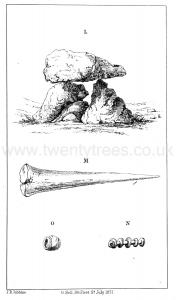
Culture, General Things, Dictionaries, Latin Dictionary, Mensis
Mensis. Month.
On 25 Mar 1440 Geoffrey Boleyn (age 60) died. Around 1414 Alice Bracton (age 29) died. Memorial brass in the floor of the nave of Church of St Peter and St Paul, Salle [Map]. It originally also had tiny figures representing their 5 sons and 4 daughters, but the inlay is lost. Inscription: Hic jacet Galfrid. Boleyn qui obt. 25 die mensis Martij 1440, et Alicie, uxor. ejus, et pueror. suorum, quorum a'i'ab; &c. Label: Dominus propitius esto nobis peccatorib. ie "Here lies Geoffrey Boleyn who died the 25th day of the month of March A.D. 1440, and Alice, his wife, and children, on whose souls may God have mercy Amen"
Geoffrey Boleyn:
Around 1380 he was born to Thomas Boleyn and Anne Jane Bracton.
Before 1406 Geoffrey Boleyn and Alice Bracton were married. They were first cousins. In 1408 Geoffrey Boleyn provided timber for the building of Church of St Peter and St Paul, Salle. The church was paid for by four Lords of the manor, Geoffrey Boleyn, Thomas Brigge, Thomas Roos and an unknown person, with newly acquired wealth from the wool trade.
In 1408 Geoffrey Boleyn provided timber for the building of Church of St Peter and St Paul, Salle. The church was paid for by four Lords of the manor, Geoffrey Boleyn, Thomas Brigge, Thomas Roos and an unknown person, with newly acquired wealth from the wool trade.
Alice Bracton: Around 1385 she was born to John Bracton at Salle, Norfolk.

On 03 Aug 1482. Brass to Simon Boleyn (age 35) Vicar of Church of St Peter and St Paul, Salle [Map]. Inscription: Orate p. a'i'a. Simonis Boleyn, capellani, qui obt. 3 die mensis Augi. 1482.
Simon Boleyn: Around 1447 he was born to Geoffrey Boleyn and Ann Hoo. On 03 Aug 1482 Simon Boleyn died.
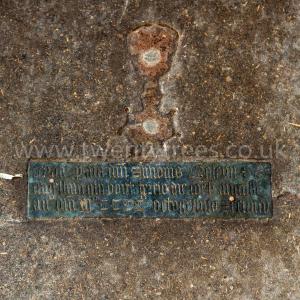
In Jun 1534 Thomas Leman Rector died. Rector of Church of St George, South Acre [Map] from 1502 to 1534. Inscription: Orate pro anima Domini Thome Leman, quandam Rectoris istius Ecclesie qui obiit r Die Mensis Junii, an Mcccccxxxiiii, cuius anime propicietur Deus.
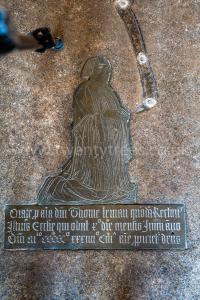
Culture, General Things, Dictionaries, Latin Dictionary, Ne totus absumatur
Ne totus absumatur. Lest the whole [world] be destroyed
Evelyn's Diary. 11 Apr 1689. I saw the procession to and from the Abbey Church of Westminster [Map], with the great feast in Westminster Hall [Map], at the coronation of King William and Queen Mary. What was different from former coronations, was some alteration in the coronation oath. Dr. Burnet (age 45), now made Bishop of Sarum, preached with great applause. The Parliament men had scaffolds and places which took up the one whole side of the Hall [Map]. When the King (age 38) and Queen (age 26) had dined, the ceremony of the Champion, and other services by tenure were performed. The Parliament men were feasted in the Exchequer chamber, and had each of them a gold medal given them, worth five-and-forty shillings. On the one side were the effigies of the King and Queen inclining one to the other; on the reverse was Jupiter throwing a bolt at Phäeton the words, "Ne totus absumatur": which was but dull, seeing they might have had out of the poet something as apposite. The sculpture was very mean.
Culture, General Things, Dictionaries, Latin Dictionary, Noli me tangere
Noli me tangere means "Touch me not". Best known from the Gospel of John Chapter 20 Verse 17 for being what Jesus says to Mary Magdelene after his resurrection.
Evelyn's Diary. 02 Sep 1680. There are besides many pompous volumes, some embossed with gold, and intaglios on agates, medals, etc. I spent three or four entire days, locked up, and alone, among these books and curiosities. In the rest of the private lodgings contiguous to this, are divers of the best pictures of the great masters, Raphael, Titian, etc., and in my esteem, above all, the "Noli me tangere" of our blessed Savior to Mary Magdalen after his Resurrection, of Hans Holbein; than which I never saw so much reverence and kind of heavenly astonishment expressed in a picture.
Gospel of John Chapter 20 Verse 17. KJB. Jesus saith unto her, Touch me not; for I am not yet ascended to my Father: but go to my brethren, and say unto them, I ascend unto my Father, and your Father; and to my God, and your God.
Culture, General Things, Dictionaries, Latin Dictionary, Nolle prosequi
Nolle prosequi. A formal notice of abandonment by a plaintiff or prosecutor of all or part of a suit or action. Literally, "to be unwilling to pursue".
Culture, General Things, Dictionaries, Latin Dictionary, Orate pro anima
Orate pro anima. Pray for the soul.
On 11 Nov 1470 Ralph St Leger (age 40) died. He was buried at All Saints Church, Ulcombe where he has his monumental brass survives showing figures of himself and his wife. The brass depicts Ralph with hands together in prayer and dressed in full armour, his bare head resting on his helm atop which is the crest of St Leger, a griffin passant. His wife Anne lies to his left, and wears an elaborate head-dress. Both persons feet rest on dogs. The inscription beneath is as follows:
Orate pro animabus Radulphi Sentleger Armigeri et Anne uxoris suae qui quidam Radulphus obiit undecimo die Novembriis anno domini millencimo CCCCLXX. Quorum animabus propicietur Deus Amen
Pray ye for the souls of Ralph Saint Leger, Esquire, and Anne his wife, the which Ralph died on the eleventh day of the month of November in the year of our Lord one thousand four hundred and seventieth. On the souls of whom may God look with favour. Amen.
On 03 Aug 1482. Brass to Simon Boleyn (age 35) Vicar of Church of St Peter and St Paul, Salle [Map]. Inscription: Orate p. a'i'a. Simonis Boleyn, capellani, qui obt. 3 die mensis Augi. 1482.
Simon Boleyn: Around 1447 he was born to Geoffrey Boleyn and Ann Hoo. On 03 Aug 1482 Simon Boleyn died.

In Jun 1534 Thomas Leman Rector died. Rector of Church of St George, South Acre [Map] from 1502 to 1534. Inscription: Orate pro anima Domini Thome Leman, quandam Rectoris istius Ecclesie qui obiit r Die Mensis Junii, an Mcccccxxxiiii, cuius anime propicietur Deus.

Culture, General Things, Dictionaries, Latin Dictionary, Pace
Pace. Peace.
Evelyn's Diary. 18 Jan 1645. Alexander Papa III., Frederici Primi Imperatoris iram et impetum fugiens, abdidit se Venetijs; cognitum et à senatu perhonorificè susceptum, Othone Imperatoris filio navali prælio victo captoq; Fredericus, pace facta, supplex adorat; fidem et obedientiam pollicitus. Ita Pontifici sua dignitas Venet. Reip. beneficio restituta MCLXXVIII.
Culture, General Things, Dictionaries, Latin Dictionary, Patri Charissimo
Patri Charissimo. Very dear father.
After 17 Jan 1851. Monumen to Spencer Compton 2nd Marquess Northampton (deceased). Angel of the Resurrection sculpted by Pietro Tenerani (age 61) in 1866. The quote from First Letter to the Corinthians Chapter 15 Verse 52. The inscription on the side Marmoris hoc sculpti eloquens silentium spe futuri patri charissimo dicavit filius.





Culture, General Things, Dictionaries, Latin Dictionary, Per verba de prœsenti
Per verba de prœsenti. A phrase applied to contracts of marriage. A verbal marriage contract.
Culture, General Things, Dictionaries, Latin Dictionary, Peristyle
Peristyle. A row of columns surrounding a space within a building such as a court or internal garden or edging a veranda or porch.
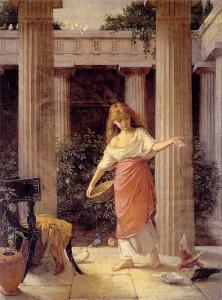 1874. John William Waterhouse (age 24). "In the Peristyle".
1874. John William Waterhouse (age 24). "In the Peristyle".
Culture, General Things, Dictionaries, Latin Dictionary, Pontifex
Pontifex. A pontiff (from Latin pontifex) was, in Roman antiquity, a member of the most illustrious of the colleges of priests of the Roman religion, the College of Pontiffs. A pontiff (from Latin pontifex) was, in Roman antiquity, a member of the most illustrious of the colleges of priests of the Roman religion, the College of Pontiffs.
Culture, General Things, Dictionaries, Latin Dictionary, Preceptor
Preceptor. Teacher, tutor, etc. One who upholds precepts.
Evelyn's Diary. 24 Oct 1663. Mr. Edward Phillips came to be my son's (age 8) preceptor: this gentleman was nephew to Milton, who wrote against Salmasius's "Defensio"; but was not at all infected with his principles, though brought up by him.
Culture, General Things, Dictionaries, Latin Dictionary, Prudens qui Patiens
Prudens qui Patiens. He who is patient is prudent.
On 03 Sep 1634 Edward Coke (age 82) died. Monument in Church of St Mary the Virgin, Tittleshall [Map]. Simple sarcophagus on pedestal with lying effigy. Pair of flanking Tuscan columns supporting a full entablature with putti on frieze and broken segmental pediment. Carved and painted achievement in and above tympanum flanked by four reclining figures of the Virtues on pediment extrados.
Above. Quarterly of eight:  Coke Arms, Crispin, Folkard, Sparham, Nerford, Yarmouth,
Coke Arms, Crispin, Folkard, Sparham, Nerford, Yarmouth,  Knightley Arms and Pawe. The crest is broken. Farrer says it was: On a chapeau Azure, turned up Ermine, an ostrich Argent, holding in its mouth a horseshoe Or. The motto reads Prudens qui Patiens.
Knightley Arms and Pawe. The crest is broken. Farrer says it was: On a chapeau Azure, turned up Ermine, an ostrich Argent, holding in its mouth a horseshoe Or. The motto reads Prudens qui Patiens.
The effigy was carved by John Hargrave, the rest of the memorial was made by Nicholas Stone (age 47).
Below the effigy are three shields. Left  Coke Arms implaling
Coke Arms implaling  Paston Arms. His first wife Bridget Paston. Middle
Paston Arms. His first wife Bridget Paston. Middle  Coke Arms. Right
Coke Arms. Right  Coke Arms impaling
Coke Arms impaling  Cecil Arms; his second wife Elizabeth Cecil Countess Berkshire (age 38).
Cecil Arms; his second wife Elizabeth Cecil Countess Berkshire (age 38).

Bridget Paston: she was born to John Paston. On 13 Aug 1582 Edward Coke and she were married. She a great x 4 granddaughter of King Edward III of England.
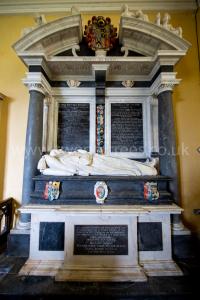
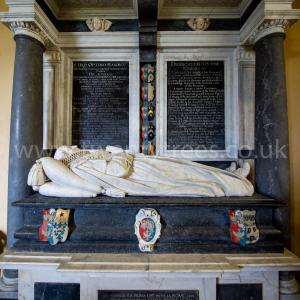
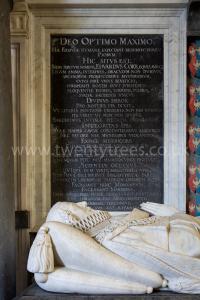
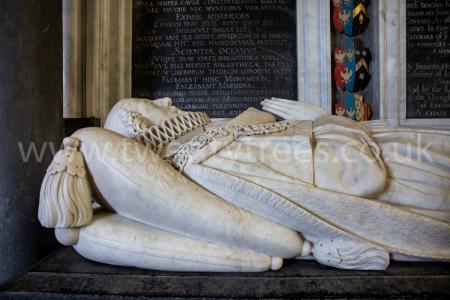
Culture, General Things, Dictionaries, Latin Dictionary, Quis talia fando temperet a lacrimis
Evelyn's Diary. 30 Dec 1640. I saw his Majesty (age 40) (coming from his Northern Expedition) ride in pomp and a kind of ovation, with all the marks of a happy peace, restored to the affections of his people, being conducted through London with a most splendid cavalcade; and on the 3d of November following (a day never to be mentioned without a curse), to that long ungrateful, foolish, and fatal Parliament, the beginning of all our sorrows for twenty years after, and the period of the most happy monarch in the world: Quis talia fando!
Culture, General Things, Dictionaries, Latin Dictionary, Quondam
Quondam. that once was; former.
Pepy's Diary. 11 Oct 1667. And then rose and called W. Hewer (age 25), and he and I, with pails and a sieve, did lock ourselves into the garden, and there gather all the earth about the place into pails, and then sift those pails in one of the summer-houses, just as they do for dyamonds in other parts of the world; and there, to our great content, did with much trouble by nine o'clock (and by the time we emptied several pails and could not find one), we did make the last night's forty-five up seventy-nine: so that we are come to about twenty or thirty of what I think the true number should be; and perhaps within less; and of them I may reasonably think that Mr. Gibson might lose some: so that I am pretty well satisfied that my loss is not great, and do bless God that it is so well1, and do leave my father to make a second examination of the dirt, which he promises he will do, and, poor man, is mightily troubled for this accident, but I declared myself very well satisfied, and so indeed I am; and my mind at rest in it, being but an accident, which is unusual; and so gives me some kind of content to remember how painful it is sometimes to keep money, as well as to get it, and how doubtful I was how to keep it all night, and how to secure it to London: and so got all my gold put up in bags.
Note 1. About the year 1842, in removing the foundation of an old wall, adjoining a mansion at Brampton always considered the quondam residence of the Pepys family, an iron pot, full of silver coins, was discovered, and taken to the Earl of Sandwich, the owner of the house, in whose possession they still remain. The pot was so much corroded, that a small piece of it only could be preserved. The coins were chiefly half-crowns of Elizabeth and the two elder Stuarts, and all of a date anterior to the Restoration. Although Pepys states that the treasure which he caused to be buried was gold exclusively, it is very probable that, in the confusion, a pot full of silver money was packed up with the rest; but, at all events, the coincidence appeared too singular to pass over without notice. B.
Evelyn's Diary. 15 Jul 1685. Thus ended this quondam Duke (age 36), darling of his father and ye ladies, being extreamly handsome and adroit; an excellent souldier and dancer, a favourite of the people, of an easy nature, debauch'd by lust, seduc'd by crafty knaves who would have set him up only to make a property, and took the opportunity of the King being of another religion, to gather a party of discontented men. He fail'd, and perish'd. He was a lovely person, had a virtuous and excellent lady that brought him greate riches, and a second dukedom in Scotland. He was Master of the Horse, General of the King his father's Army, Gentleman of the Bedchamber, Knight of the Garter, Chancellor of Cambridge, in a word had accumulations without end. See what ambition and want of principles brought him to! He was beheaded on Tuesday 14th July [Note. Most sources quote 15 Jul 1685]. His mother, whose name was Barlow [Note. Lucy Walter is often spoken of incorrectly as Mrs. Walters or Waters, and during her career she seems to have adopted the alias of Mrs. Barlo or Barlow (the name of a family with which the Walters of Pembrokeshire had intermarried). From Dictionary of National Biography.], daughter of some very meane creatures, was a beautiful strumpet, whom I had often seene at Paris; she died miserably without any thing to bury her; yet this Perkin had ben made to believe that the King had married her; a monstrous and ridiculous forgerie; and to satisfy the world of the iniquity of the report, the King his father (If his father he really was, for he most resembl'd one Sidney, who was familiar with his mother) publickly and most solemnly renounc'd it, to be so enter'd in the Council Booke some yeares since, with all ye Privy Councellors at testation.

Culture, General Things, Dictionaries, Latin Dictionary, Quæstio Facti
Quæstio Facti. Question of fact.
Culture, General Things, Dictionaries, Latin Dictionary, Quæstio vexata
Quæstio vexata. Doubtful question.
Culture, General Things, Dictionaries, Latin Dictionary, Ratio ultima Regum
Ratio ultima Regum. The last argument of kings, or The ultimate argument of kings.
Evelyn's Diary. 23 Mar 1644. The next morning, we saw the citadel, strong and regular, well stored with artillery and ammunition of all sorts: the works furnished with fair brass cannon, having a motto, Ratio ultima Regum. The allogements of the garrison are uniform; a spacious place for drawing up the soldiers, a pretty chapel, and a fair house for the Governor. The Duke of Richelieu being now in the fort, we went to salute him; who received us very civilly, and commanded that we should be showed whatever we desired to see. The citadel was built by the late Cardinal de Richelieu, uncle of the present Duke, and may be esteemed one of the strongest in France. The haven is very capacious.
Culture, General Things, Dictionaries, Latin Dictionary, Redeō
redeō translates to return, come back, revert.
redire
redire. Present active infinitive of redeō.
Culture, General Things, Dictionaries, Latin Dictionary, Rex dedit
Rex dedit, culpa abstulit. The King gave, I take the blame,
Autobiography Simon D'Ewes. 31 Dec 1690. The four lords that came for it were Henry Viscount Mandeville, Lord Treasurer, Lodowick Stewart, Duke of Lennox, Lord Steward of the King's house-hold, William Herbert, Earl of Pembroke, Lord Chamberlain of the same household, and Thomas Earl of Arundel, Earl Marshal of England (whom I should have placed before Pembroke); they, coming to York House [Map] to him, where he lay, told him they were sorry to visit him upon such an occasion, and wished it had been better. "No, my lords," replied he, "the occasion is good;" and then delivering them the great seal, he added, "It was the King's favour that gave me this, and it is my fault that hath taken it away: Rex dedit, culpa abstulit" - or words to that effect. So leaving him, the said four lords carried the gage they had received to Whitehall, to the King, who was overheard by some near him to say upon their delivery of it to him, "Now, by my soul, I am pained at the heart where to bestow this; for as to my lawyers, I think they be all knaves." Which it seemeth his Majesty spake at that time to prepare a way to bestow it on a clergyman, as the Marquis of Buckingham had intended; for otherwise there were at this present divers able wise lawyers, very honest and religious men, fit for the place, in whom there might easily have been found as much integrity, and less fawning and flattery than in the clergy; and, accordingly, Doctor Williams, now Dean of Westminster, and before that time made Bishop of Lincoln, was sworn Lord Keeper, and had the great seal delivered to him. On October the 9th, next ensuing, being the first day of Michaelmas Term, one Lloyd, or Floud, a Papist, being of the Inner Temple, having spoken these buse and opprobrious words following of the distressed Prince Elector Palatine and his royal lady, to wit, - "What is now become of your goodman Palsgrave, and your goodwife Palsgrave?1 - they had, I think, as much right to the kingdom of Bohemia as I have to the principality of Wales," was censured by the House of Commons, to pay a fine to the King, to be imprisoned during the King's pleasure, to ride disgracefully two several days in the open street upon a horse, with his face to the tail of it, and each day to stand in the pillory. The execution was long deferred, his fine and imprisonment remitted, and himself and his fellow Romanists began to boast that nothing should be inflicted. But at last, tho two Houses of Parliament appearing stoutly in the cause, he underwent the first day's punishment on May the 30th, being Wednesday, and the second on Friday the 1st day of June, on which Midsummer Term began. These days' actions I have added a little before the due time, that I might at once finish the relation of this business; in which the faithful zealous affection of the whole state and kingdom, in their body representative, consisting of the two Houses of Parliament, was fully expressed to that royal Princess, our King's only daughter, amidst the many scorns and oppressions of her irreconcilable and bloody enemies.



Note 1. This exclamation is given somewhat differently by Meade in the Harl. MSS. He says, "On Tuesday, Floyd, a counsellor, steward and receiver in Shropshire to the old Lord Chancellor Ellesmere and the Earl of Suffolk, a papist, and prisoner in the Fleet, was censured to ride thrice with papers, and stand in the pillory, and first at Westminster, for saying, Goodman Palsgrave. and Goody Palsgrave may or must go pack their children at their backs and beg. On Wednesday should have been the first time, but his Majesty stayed it. Yesterday the King and House met; his Majesty thanked them for the care they had of his son-in-law, daughter, and grandchildren's honour; if it were in them to censure this prisoner, the censure should be executed, otherwise there should be a punishment equivalent to that they had set down; which gave good content."
Culture, General Things, Dictionaries, Latin Dictionary, Sacellum
Sacellum. A small shrine.
Stonehenge by William Stukeley. In order to have a just notion of this avenue, it is necessary to go to the neighbouring height of Haradon hill [Map], on the other side the river. The largest barrow there, which I call Hara's and which probably gave name to the hill, is in the line of the avenue; the ford of Radfin lying between, as we see in the last Plate. I stood upon this hill May 11. 1724. during the total eclipse of the sun, of which I gave an account in my Itinerarium. Here is a most noble view of the work and country about Stonehenge. Whoever is upon the spot cannot fail of a great pleasure in it; especially if the fun be low, either after rising or before setting. For by that means the barrows, the only ornaments of these plains, become very visible, the ground beyond them being illuminated by the suns flaunting rays. You fee as far as Clay-hill beyond Warminster 20 miles off. You fee the spot of ground on the hill, whereon stands Vespasians camp [Map], where I conjecture the avenue to Stonehenge began, and where there was a facellum, as we conceive. From hence to that spot a valley leads very commodiously to Radfin [Map], where the original ford was.
Introduction. The reader will be amused by comparing this version with the inscription in the etching, and observing the expedients which were resorted to in order to bring it within the limits of the stone. To Mr. Stothard's observations on stone-coffins may be added, that they were the receptacles of the distinguished dead Rom a very early perioda. A Roman stone-coffin of very massive construction, having a coped lidb, was laid open at the excavations made in 1828 at a spot near Caesar's Camp, Holwood Hill, in Kent, where are still visible the remains of a small temple, or sacellum, in connection with Roman sepulchres. This coffin was deposited in a grave cut eight feet deep in the chalk rock. The coped form of the lid was particularly well calculated for carrying off the moisture from the interior, whether above or under ground. Accrdingly, we find in the coffin in which the body of William Rufus was deposited, the same form continued which had been adopted by the half-civilized people of Europe, like the details of their architecture, on the Roman model. The coped shape of the lid was no doubt very early varied by the flat, (particularly when the defunct was deposited under the roof of a sacred building, where no moisture was to be repelled, and the coffin lid could be thus reduced to the level of the door,) but it remains one mark of the antiquity of sepulchral chests in the Middle Age. We resume Mr. Stothard's prefatory notes:
"Effigies are rarely to be met with in England before the middle of the thirteenth century; a circumstance not to be attributed to the causes generally assigned, which were, either that they had been destroyed, or that the unsettled state of the times did not offer sufficient encouragement for erecting such memorials: but it rather appears not to have been before become the practice to represent the deceased. If it had been otherwise, for what reason do we not find effigies over the tombs of William the Conqueror, his son, William Rufus, or his daughter, Gundrada [Note. No daughter of William the Conqueror named Gundrada is known? She is probably Gundred Countess of Surrey wife of William Warenne 1st Earl Surrey, daughter of Gerbod The Fleming, who was, for some time, believed to be a daughter of William the Conqueror]. Yet, after a time, it is an undoubted fact that the alteration introduced by the Normans was the addition of the figure of the person deceased; and then it appeared not in the bold style of the later Norman monuments, but partaking of the character and low relief of those tombs it was about to supersede. Of these, and of the few, perhaps, that were executed, Roger Bishop of Sarum is the only specimen in good preservation. The effigy of Joceline Bishop of Salisbury is infinitely more relieved than that of Roger Bishop of the same see, which is far from possessing the bold relief we afterwards observe in the figure of King John. Our sculptors, having arrived at this stage of improvement, continued to execute their effigies after the same manner, (during which we observe the coffin-shaped slab giving way to a more regular figure,) till the beginning of the fourteenth century; and it was then that it entirely disappeared, and that the effigy is represented in full relief To support such a conjecture is no difficult task * * * as by the appearance of King John's remains, and other instances. "Withburg, a sister to Queen Etheldreda, Abbess of Ely, when examined, several centuries after her interment, by order of the Abbot Richard, was found with a cushion of silk beneath her head, &c. It is not unlikely that it was usual to bury the dead in this manner; whence arose the custom of sculpturing our effigies with cushions under the head. Henry the Second's effigy, at Fontevraud [Map], is thus represented, and agrees with the account given by Matthew Paris, and other writers, of that monarch's appearance after death, when placed upon the bier; and Berengaria, Queen of Richard the First, is seen in her effigy holding a book, the cover embossed with a second representation of herself (which agrees with the effigy), lying upon a bier, with waxen tapers burning in candlesticks on either side. Yet it is probable the custom of burying the dead in the dress which marked the habits of their lives was not universal; for, had it been so, we should find knights in their armourc, which would have explained points that now, probably, will never be clearly understood.


Note a. Cremari apud Romanos non fuit veteris instituti: terra condebantur; et postquam longinquis bellis obrutos erui cognovere est institutum, et tamen multse familise priscos servavere ritus. [Among the Romans cremation was not an ancient institution: they were laid in the earth; and after having been rescued from distant wars, it was determined to know the institution, and yet many families kept the ancient rites] Manutius de leg. Rom.
Note b. See Archæologia, Vol. XXII. Plate xxxii. p. 348.
Note c. The value of armour in an iron age, when the suit descended from sire to son, or was bequeathed as "a rich legacy," may account for the omission of this practice.
Culture, General Things, Dictionaries, Latin Dictionary, Sic transit gloria mundi
Sic transit gloria mundi. Thus passes the glory of the world.
Henry Machyn's Diary. 21 Oct 1559. The xxj day of October was cared from Halewell [Map] unto Sordyche chyrche my lade the contes of Rutland, with xxx [30] clarkes and prestes syngyng, and mony pore men and powre women in blake gownes a lx [60] and mo, morners to the nomber of a C [100] and ij [2] haroldes of armes, master Garter (age 49) and master Yorke; then cam the corsse; a-for a grett baner of armes, and a-bowt her iiij [4] goodly banerrolles of dyvers armes; and master Beycon mad the sermon; and after a grett dolle of money, ij d [2 pence] a-pesse; and so to dener, and yt was wryten a-bowt the valans Sic transit gloria mundi, and ther was vj [6] dosen penselles and vj [6] dosen skochyons.
Culture, General Things, Dictionaries, Latin Dictionary, Spe futuri
Spe futuri. Hope for the future.
After 17 Jan 1851. Monumen to Spencer Compton 2nd Marquess Northampton (deceased). Angel of the Resurrection sculpted by Pietro Tenerani (age 61) in 1866. The quote from First Letter to the Corinthians Chapter 15 Verse 52. The inscription on the side Marmoris hoc sculpti eloquens silentium spe futuri patri charissimo dicavit filius.





Culture, General Things, Dictionaries, Latin Dictionary, Terræ filius
Terræ filius. The University Buffoon. Or basely born.
Pepy's Diary. 24 Feb 1668. Thence to the Exchange [Map] and left her; while meeting Dr. Gibbons (age 52) there, he and I to see an organ at the Dean of Westminster's lodgings at the Abby, the Bishop of Rochester (age 43); where he lives like a great prelate, his lodgings being very good; though at present under great disgrace at Court, being put by his Clerk of the Closet's place. I saw his lady, of whom the 'Terræ filius' of Oxford was once so merry1 and two children, whereof one a very pretty little boy, like him, so fat and black. Here I saw the organ; but it is too big for my house, and the fashion do not please me enough; and therefore will not have it.
Note 1. A scholar appointed to make a satirical and jesting speech at an Act in the University of Oxford. Mr. Christopher Wordsworth gives, in his "Social Life at the English Universities in the Eighteenth Century", 1874, a list of terra-filii from 1591 to 1713 (pp. 296- 298, 680). The 'Terræ filius' was sometimes expelled the university on account of the licence of his speech. The practice was discontinued early in the eighteenth century.
Evelyn's Diary. 10 Jul 1669. The next day began the more solemn lectures in all the faculties, which were performed in the several schools, where all the Inceptor-Doctors did their exercises, the Professors having first ended their reading. The assembly now returned to the Theater, where the Terræ filius entertained the auditory with a tedious, abusive, sarcastical rhapsody, most unbecoming the gravity of the University, and that so grossly, that unless it be suppressed, it will be of ill consequence, as I afterward plainly expressed my sense of it both to the Vice-Chancellor and several Heads of Houses, who were perfectly ashamed of it, and resolved to take care of it in future. The old facetious way of rallying upon the questions was left off, falling wholly upon persons, so that it was rather licentious lying and railing than genuine and noble wit. In my life, I was never witness of so shameful an entertainment.
Culture, General Things, Dictionaries, Latin Dictionary, Timeo Danaos et dona ferentes
Timeo Danaos et dona ferentes. "I fear the Danaans [Greeks], even those bearing gifts," but it is usually translated in English as "Beware (or be wary) of Greeks bearing gifts." A quote from Virgil's Aeneid.
Chronica Majora. After 13 Jan 1237. In this year Llewellyn, prince of Wales (age 65), by special messengers sent word to the king that, as his time of life required that he should thenceforth abandon all strife and the tumult of war, and should for the future enjoy tranquillity and peace, he had determined to place himself and all his possessions under the authority and protection of him, the English king, and would hold his lands from him in all faith and friendship, and enter into an indissoluble treaty; and if the king should be proceeding on any expedition, he would to the best of his power, as his liege subject, promote it, by assisting him with troops, arms, horses, and money. To confirm and ratify this treaty, the bishops of Hereford and Chester [Note. In 1237 Chester wasn't a Bishopric?] were sent as mediators to bring the aforesaid matter to a conclusion. The cause of this message is said to have been that the said Llewellyn, owing to an attack of paralysis, was unable of himself to oppose the grievous attacks of his son Griffin (age 39), who was making war against him. Many of the nobles of Wales agreed to this treaty, and confirmed it at the same time as Llewellyn; some of them, however, strongly opposed their compacts. The faith of the Welsh is a want of faith, and they show no mercy when they have it in their power; and when fortune befriends them, they persecute those who fall into their power; but when defeated, they either fly or humble themselves: and such persons are never to be trusted, as the poet says, "I fear the Greeks, even when they bring gifts;" the philosopher Seneca also says, "You will never make safe treaty with any enemy."
Culture, General Things, Dictionaries, Latin Dictionary, Traditio Lampadis
Traditio Lampadis. Delivering the lamp, possibly in the sense of bringing light.
Brief Lives: Elizabeth Danvers. [716]His[CY] mother, an Italian, prodigious parts for a woman. I have heard my father's mother say that she had Chaucer at her fingers' ends.
A great politician; great witt and spirit, but revengefull[717].
Knew how to manage her estate as well as any man; understood jewells as well as any jeweller.
Very beautifull, but only short-sighted. To obtain pardons for her sonnes[718] she maryed Sir Edmund Carey, cosen-german to queen Elizabeth, but kept him to hard meate.
Smyth of Smythcotes-Naboth's vineyard-digitus Dei[CZ].
The arcanum-'traditio lampadis' in the family of Latimer[DA] of poysoning king Henry 8-from my lady Purbec.
Notes.
Note 716. MS. Aubr. 8, fol. 25.
Note 717. Aubrey, in the margin, notes 'Anne Bulleyn.'
Note 718. For the murder of Henry Long.
[CY]. i.e. Henry, earl of Danby's. She was Elizabeth, daughter of John Nevill, the last lord Latimer. 'An Italian' may mean that she knew that language, among her other accomplishments. I can make nothing of a note added by Aubrey here, which seems to read '... Cowley, crop-ear'd.'
[CZ]. I do not know to what circumstance, in the history of the Danvers family, Aubrey here applies 1 Kings xxi. 19.
[DA]. Catherine Parr, last consort of Henry VIII, was widow of John, 3rd lord Latimer; and step-mother of John, 4th lord Latimer, the father of this Elizabeth Danvers, whose grand-daughter ('viscountess Purbeck') was Aubrey's informant.
Culture, General Things, Dictionaries, Latin Dictionary, Utcunque
Utcunque. However, whenever, one way or another.
Pepy's Diary. 22 Jan 1661. From thence home, and after a little dinner my wife and I by coach into London, and bought some glasses, and then to Whitehall to see Mrs. Fox, but she not within, my wife to my mother Bowyer, and I met with Dr. Thomas Fuller (age 52), and took him to the Dog [Map], where he tells me of his last and great book that is coming out: that is, his History of all the Families in England;' and could tell me more of my own, than I knew myself.And also to what perfection he hath now brought the art of memory; that he did lately to four eminently great scholars dictate together in Latin, upon different subjects of their proposing, faster than they were able to write, till they were tired; and by the way in discourse tells me that the best way of beginning a sentence, if a man should be out and forget his last sentence (which he never was), that then his last refuge is to begin with an Utcunque.
Culture, General Things, Dictionaries, Latin Dictionary, Viatores
Viatores. Travelers.
Culture, General Things, Dictionaries, Latin Dictionary, Vix ea nostra voco
vix ea nostra voco. I can scarcely call these things our own. A quote from Ovid that alludes to ancestry.
On 14 Jan 1725 John Anstis, Garter King at Arms, by order of King George I granted by patent to Sir Andrew Fountaine (age 49), Knt then vice-chamberlain to the Princess of Wales, and tutor to his highness Prince William, for whom he was installed (as proxy) knight of the honourable Order of the Bath, supporters to his arms, viz on either side a lion gules with wings erected or, with the old family motto of, Vix Ea Nostra Voco, and the ancient arms of Fountaine, or, a fess gules between three elephants heads erased sable.
After 27 Jul 1746. Church of St Mary, Narford [Map]. Monument to Elizabeth Clent (deceased) and her grandmother Sarah Chicheley. An urn and inscription panel. Inscribed chest with a heavy plinth, surmounted by a sarcophagus and an obelisk with an urn finial and heraldic achievement with motto of the Fountaine family vix ea nostra voco.
Elizabeth Clent: Captain William Price and she were married. She inherited Narford Hall when her mother Elizabeth Fountaine died. In 1706 she was born to Colonel Edward Clent of Knightwick in Worcestershire and Elizabeth Fountaine. On 27 Jul 1746 she died. Her son Brigg Price inherited Narford Hall.
Sarah Chicheley: she was born to Thomas Chicheley of Wimpole and Sarah Russell. On or after 29 Apr 1672 Andrew Fountaine and she were married. In 1710 Andrew Fountaine was gravely ill at his London townhouse. Johnathan Swift wrote ... Sir Andrew's mother and sister are come above a hundred miles to see him before he died. I knew the mother; she is the greatest Overdo upon earth; and the sister, they say, is worse; the poor man will relapse again among them. Here was the scoundrel brother [Note. Probably brother-in-law Colonel Edward Clent of Knightwick in Worcestershire] always crying in the other room till Sir Andrew was in danger; and the dog was to have all his estate if he died.
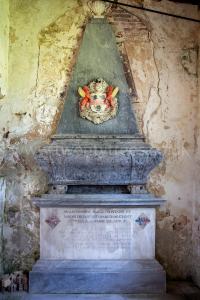
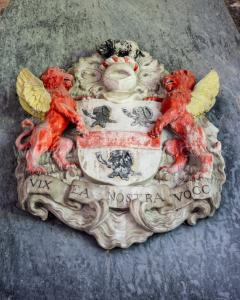
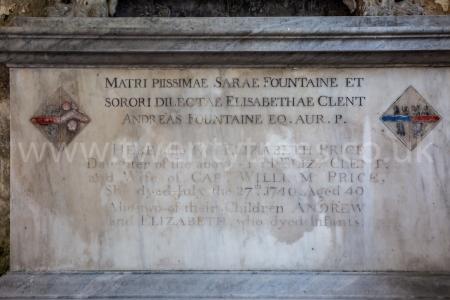
Culture, General Things, Dictionaries, Latin Dictionary, capellani
capellani. Chaplain.
On 03 Aug 1482. Brass to Simon Boleyn (age 35) Vicar of Church of St Peter and St Paul, Salle [Map]. Inscription: Orate p. a'i'a. Simonis Boleyn, capellani, qui obt. 3 die mensis Augi. 1482.
Simon Boleyn: Around 1447 he was born to Geoffrey Boleyn and Ann Hoo. On 03 Aug 1482 Simon Boleyn died.

Evelyn's Diary. 22 Nov 1644. Was the solemn and greatest ceremony of all the State Ecclesiastical, viz, the procession of the Pope (Innocent X.) to St. John di Laterano, which, standing on the steps of Ara Celi, near the Capitol, I saw pass in this manner:-First went a guard of Switzers to make way, and divers of the avant guard of horse carrying lances. Next followed those who carried the robes of the Cardinals, two and two; then the Cardinal's mace bearers; the caudatari, on mules; the masters of their horse; the Pope's barber, tailor, baker, gardener, and other domestic officers, all on horseback, in rich liveries; the squires belonging to the Guard; five men in rich liveries led five noble Neapolitan horses, white as snow, covered to the ground with trappings richly embroidered; which is a service paid by the King of Spain for the kingdoms of Naples and Sicily, pretended feudatories to the Pope; three mules of exquisite beauty and price, trapped in crimson velvet; next followed three rich litters with mules, the litters empty; the master of the horse alone, with his squires; five trumpeters; the armerieri estra muros; the fiscal and consistorial advocates; capellani, camerieri de honore, cubiculari and chamberlains, called secreti.
Culture, General Things, Dictionaries, Latin Dictionary, constipo
constipatum
constipatum. Means crowded or closely pressed together.
Culture, General Things, Dictionaries, Latin Dictionary, coram Rege
coram Rege. In the presence of the King.
Evelyn's Diary. 30 Mar 1673. At the sermon coram Rege, preached by Dr. Sparrow (age 61), Bishop of Exeter, to a most crowded auditory; I stayed to see whether, according to custom, the Duke of York (age 39) received the Communion with the King (age 42); but he did not, to the amazement of everybody. This being the second year he had forborne, and put it off, and within a day of the Parliament sitting, who had lately made so severe an Act against the increase of Popery, gave exceeding grief and scandal to the whole nation, that the heir of it, and the son of a martyr for the Protestant religion, should apostatize. What the consequence of this will be, God only knows, and wise men dread.
Evelyn's Diary. 22 Mar 1678. Dr. South (age 43) preached coram Rege, an incomparable discourse on this text, "A wounded spirit who can bear!" Note: Now was our Communion table placed altarwise; the church steeple, clock, and other reparations finished.
Culture, General Things, Dictionaries, Latin Dictionary, cuius anime propicietur Deus
cuius anime propicietur Deus. Upon whose soul may God have mercy.
In Jun 1534 Thomas Leman Rector died. Rector of Church of St George, South Acre [Map] from 1502 to 1534. Inscription: Orate pro anima Domini Thome Leman, quandam Rectoris istius Ecclesie qui obiit r Die Mensis Junii, an Mcccccxxxiiii, cuius anime propicietur Deus.

Culture, General Things, Dictionaries, Latin Dictionary, cūrō
cūrō translates as care for, arrange, see to, attend to, take care of, cure, govern, refresh, undertake.
curavit
curavit. Third-person singular perfect active indicative of cūrō.
1260 Annals Dunstable. 1260. In the year of grace 1260.Henry King of England (age 52), son of King John, etc.
Original Latin Text:
Anno gratiae MCCLX. Henricus rex Angliae (age 52), filius regis Johannis, pace firmata cum rege Franciae, ibidem per longum tempus moram traxit; nec in Angliam redire curavit, donec episcopi et magnates Angliae ei literatorie mandaverunt quod reverti in Angliam properaret; quod si non faceret, ad placitum suum in Anglia non rediret. Quo audito, rex in se reversus, in Angliam rediit; sed quidam malitiosi falsis rumoribus inter patrem et filium suum Edwardum discordiam seminavervmt, asserentes quod dictus Edwardus et consiliarii sui guerram domino regi movere procurarunt; propter quod dominus rex supra modum iratus, multos milites de partibus transmarinis usque Londoniam secum adduxit; et eis ultra pontem dimissis in partibus Sureiae, ipse civitatem Londonise ingressus est, et ibi aliquandiu moram fecit, portis civitatis firmatis et seratis, apposuit custodes, ut nullus nisi ab eo licentiatus ingrederetur.
Comes vero Gloverni, et Johannes Maunsel, et quidam alii qui de concilio regis fuerunt, ad placitum suum ingressum et egressum habuerunt.
Rex vero proliibuit, ne filius suus Edwardus, nec aliquis qui de consilio suo extiterat, coram ipso venirent, dicens, "Coram me non appareat filius mens Edwardus, quia si eum videro, quin ipsum osculer me non cohibebo.".
Tandem, amore paterno commotus, et magnatum precibus devictus, ipsum ad osculum pacis recepit, et regina mater sua similiter, quae, ut dicebatur, causa totius malitis extiterat.
Dum ista aguntur, quantos honores et quantas expensas, omnibus qui interesse voluerint, dominus Edwardus fecerit, lingua vix potest explicare.
Culture, General Things, Dictionaries, Latin Dictionary, firmata
1260 Annals Dunstable. 1260. In the year of grace 1260.Henry King of England (age 52), son of King John, etc.
Original Latin Text:
Anno gratiae MCCLX. Henricus rex Angliae (age 52), filius regis Johannis, pace firmata cum rege Franciae, ibidem per longum tempus moram traxit; nec in Angliam redire curavit, donec episcopi et magnates Angliae ei literatorie mandaverunt quod reverti in Angliam properaret; quod si non faceret, ad placitum suum in Anglia non rediret. Quo audito, rex in se reversus, in Angliam rediit; sed quidam malitiosi falsis rumoribus inter patrem et filium suum Edwardum discordiam seminavervmt, asserentes quod dictus Edwardus et consiliarii sui guerram domino regi movere procurarunt; propter quod dominus rex supra modum iratus, multos milites de partibus transmarinis usque Londoniam secum adduxit; et eis ultra pontem dimissis in partibus Sureiae, ipse civitatem Londonise ingressus est, et ibi aliquandiu moram fecit, portis civitatis firmatis et seratis, apposuit custodes, ut nullus nisi ab eo licentiatus ingrederetur.
Comes vero Gloverni, et Johannes Maunsel, et quidam alii qui de concilio regis fuerunt, ad placitum suum ingressum et egressum habuerunt.
Rex vero proliibuit, ne filius suus Edwardus, nec aliquis qui de consilio suo extiterat, coram ipso venirent, dicens, "Coram me non appareat filius mens Edwardus, quia si eum videro, quin ipsum osculer me non cohibebo.".
Tandem, amore paterno commotus, et magnatum precibus devictus, ipsum ad osculum pacis recepit, et regina mater sua similiter, quae, ut dicebatur, causa totius malitis extiterat.
Dum ista aguntur, quantos honores et quantas expensas, omnibus qui interesse voluerint, dominus Edwardus fecerit, lingua vix potest explicare.
Culture, General Things, Dictionaries, Latin Dictionary, fronti nulla fides
fronti nulla fides. No reliance can be placed on appearance; appearances are deceptive; there is no trusting to appearances (Juvenal).
Colt Hoare 1812. No. 6 [Map] is one of the finest barrows in this group, and is 13 feet 9 inches in elevation. On making our section, the workmen had the good fortune to dig close to the side of a large sepulchral urn which stood within one foot of the surface, without injuring it. It was rudely formed and baked, measured 15 inches in height, and 13 in width and was placed with its mouth downwards over a large pile of burned bones, amongst which was a fine ivory bodkin, Plate XXX. No. 2. At a further depth of five feet were the remains of two skeletons; and at the bottom of the barrow, and total depth of 13 feet 9 inches, was an oblong cist, five feet deep, and seven feet long, cut in the chalk, containing the skeleton of a child, apparently not more than two or three years old, accompanied by a drinking cup.
The history of this tumulus, which our learned Doctor would, from its superior size and beautiful form, have styled a KING BARROW, shews what little regard we ought to pay to system; for here, at the vast depth of nearly 14 feet, we find only the deposit of an infant, accompanied by a simple drinking cup. Whilst in No, 21, a mean and insignificant barrow, we discover articles of the greatest beauty and importance. The motto of fronti nulla fides may be justly and strictly applied to barrows; and the antiquary who makes them his study must neither be disappointed in finding only a simple interment in the largest barrow, and the finest urns and most precious trinkets in the smallest. Curiosity, however, is equally kept on the alert; and it matters little whether we gain our information by the operations of the spade on a large or a diminutive tumulus.
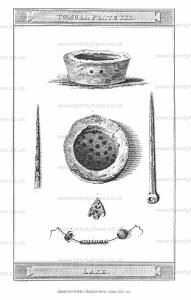
Section I Tumuli 1843. July 14th, 1843, one of the most interesting barrows ever examined in this vicinity was opened. It is situated upon a ridge of high land, near the village of Biggin, which goes by the name of the "Liffs [Map]," the barrow itself having no specific name: the mound had been sadly mutilated, at least one third of it having been removed; notwithstanding this the truth of Sir Richard Hoare's maxim, "fronta nulla fides," was agreeably exemplified. That hemisphere of the circle which still remained the most perfect was selected as the place where to commence operations: on reaching the thickest part of the circle, which, owing to the depression usual in the middle of most barrows, would be about two yards from the centre, a few human bones, horses' teeth, various animal bones, and two small pieces of a very thick and coarse urn, were found; but not until penetrating to the heart of the barrow was the principal interment discovered. In that situation an octagonal cist was erected of the usual material, namely, thin flat lime-stones, which are admirably adapted for the purpose; this vault was about half filled with stiff clay, imbedded in which lay a fine human skeleton, whose knees were drawn up, according to a general custom, prevalent in the most remote ages. The extreme antiquity of this interment is demonstrated by the simple form and material of the weapons and tools which were, with one exception, deposited in a cluster behind the shoulders of this early denizen of the Derbyshire moors. The skull, which is fine and intellectual, lay on the left side so as to look towards the west, and in the angle formed by the contraction of the knees, was placed a hammer-head ingeniously constructed out of the lower part of the horn of a noble red deer; one end of this instrument is rounded and polished, the other is cut into a diamond pattern, somewhat similar to the wafer stamps used by attorneys. The articles before alluded to as being placed near the shoulders were of a very miscellaneous character, and highly interesting; as showing, after a lapse of several thousand years, that the savage Briton reposing in this cairn had cultivated the art of making war amongst the inhabitants of the forest, in preference to molesting his fellow-savages; as almost the first observed articles were a pair of enormous tusks of the wild boar, the trophies of some, perhaps his last, sylvan triumph; next came two arrow-heads of flint, delicately chipped, and of unusual form; two flint celts or chisels, beautifully chipped and polished at the cutting edges; two spear-heads of the same material; two flint knives polished on the edge, one of them serrated on the back, in order to serve as a saw; and numerous other pieces of flints of indescribable form and use, which, together with all the flint instruments enumerated above, seem to have undergone a partial calcination being gray tinted with various shades of blue and pink; with these utensils were found three pieces of red ochre, the rouge of these unsophisticated huntsmen which, even now, on being wetted imparts a bright red colour to the skin, which is by no means easy to discharge. Upon the summit of the little heap, formed by this accumulation of relics, lay a small drinking or incense cup of novel and unprecedented shape, which was unfortunately broken and crushed, but has been since restored. The absence of instruments of metal in this and other barrows should be borne in mind; it is commented on in another part of this work.
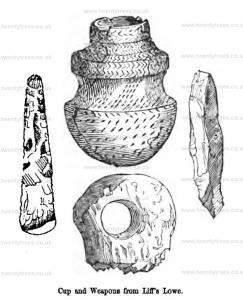
Culture, General Things, Dictionaries, Latin Dictionary, grātia
Grātia. In English 'grace'.
gratiae
gratiae. Genitive or Dative singular of grātia.
1260 Annals Dunstable. 1260. In the year of grace 1260.Henry King of England (age 52), son of King John, etc.
Original Latin Text:
Anno gratiae MCCLX. Henricus rex Angliae (age 52), filius regis Johannis, pace firmata cum rege Franciae, ibidem per longum tempus moram traxit; nec in Angliam redire curavit, donec episcopi et magnates Angliae ei literatorie mandaverunt quod reverti in Angliam properaret; quod si non faceret, ad placitum suum in Anglia non rediret. Quo audito, rex in se reversus, in Angliam rediit; sed quidam malitiosi falsis rumoribus inter patrem et filium suum Edwardum discordiam seminavervmt, asserentes quod dictus Edwardus et consiliarii sui guerram domino regi movere procurarunt; propter quod dominus rex supra modum iratus, multos milites de partibus transmarinis usque Londoniam secum adduxit; et eis ultra pontem dimissis in partibus Sureiae, ipse civitatem Londonise ingressus est, et ibi aliquandiu moram fecit, portis civitatis firmatis et seratis, apposuit custodes, ut nullus nisi ab eo licentiatus ingrederetur.
Comes vero Gloverni, et Johannes Maunsel, et quidam alii qui de concilio regis fuerunt, ad placitum suum ingressum et egressum habuerunt.
Rex vero proliibuit, ne filius suus Edwardus, nec aliquis qui de consilio suo extiterat, coram ipso venirent, dicens, "Coram me non appareat filius mens Edwardus, quia si eum videro, quin ipsum osculer me non cohibebo.".
Tandem, amore paterno commotus, et magnatum precibus devictus, ipsum ad osculum pacis recepit, et regina mater sua similiter, quae, ut dicebatur, causa totius malitis extiterat.
Dum ista aguntur, quantos honores et quantas expensas, omnibus qui interesse voluerint, dominus Edwardus fecerit, lingua vix potest explicare.
Culture, General Things, Dictionaries, Latin Dictionary, ibidem
ibidem. Same. Same time, same place, same reference. Commonly abbreviated to Ibid.
Culture, General Things, Dictionaries, Latin Dictionary, jejune
jejune. Of writing, dry and uninteresting.
Culture, General Things, Dictionaries, Latin Dictionary, moram
1260 Annals Dunstable. 1260. In the year of grace 1260.Henry King of England (age 52), son of King John, etc.
Original Latin Text:
Anno gratiae MCCLX. Henricus rex Angliae (age 52), filius regis Johannis, pace firmata cum rege Franciae, ibidem per longum tempus moram traxit; nec in Angliam redire curavit, donec episcopi et magnates Angliae ei literatorie mandaverunt quod reverti in Angliam properaret; quod si non faceret, ad placitum suum in Anglia non rediret. Quo audito, rex in se reversus, in Angliam rediit; sed quidam malitiosi falsis rumoribus inter patrem et filium suum Edwardum discordiam seminavervmt, asserentes quod dictus Edwardus et consiliarii sui guerram domino regi movere procurarunt; propter quod dominus rex supra modum iratus, multos milites de partibus transmarinis usque Londoniam secum adduxit; et eis ultra pontem dimissis in partibus Sureiae, ipse civitatem Londonise ingressus est, et ibi aliquandiu moram fecit, portis civitatis firmatis et seratis, apposuit custodes, ut nullus nisi ab eo licentiatus ingrederetur.
Comes vero Gloverni, et Johannes Maunsel, et quidam alii qui de concilio regis fuerunt, ad placitum suum ingressum et egressum habuerunt.
Rex vero proliibuit, ne filius suus Edwardus, nec aliquis qui de consilio suo extiterat, coram ipso venirent, dicens, "Coram me non appareat filius mens Edwardus, quia si eum videro, quin ipsum osculer me non cohibebo.".
Tandem, amore paterno commotus, et magnatum precibus devictus, ipsum ad osculum pacis recepit, et regina mater sua similiter, quae, ut dicebatur, causa totius malitis extiterat.
Dum ista aguntur, quantos honores et quantas expensas, omnibus qui interesse voluerint, dominus Edwardus fecerit, lingua vix potest explicare.
Culture, General Things, Dictionaries, Latin Dictionary, mutatis mutandis
mutatis mutandis means changes have been made where necessary but the main point remains the same.
The Journal of the Anthropological Institute of Great Britain and Ireland Volume 5 1876 Pages 120 to 173. To the relative size of the skulls in the two sexes in prehistoric times, the doctrine laid down by Retzius in 18452, and re-affirmed in 1854 by Hüschke2, as to the upper and lower classes of modern society, and the civilised and uncivilised races of modern days, is ordinarily supposed to apply, mutatis mutandis. Broca, in his interesting paper on the " Caverne de l' Homme Mort," says3 " L'un des traits les plus remarquables de la série de l' Homme Mort, c'est la grande capacité relative du crâne des femmes." The head of the female occupants of this cavern, like the head of the rustic Dalecarlian females, as observed upon by Retzius, was but little—some 99.50 cub. cent. ( 6 cubic inches) —inferior in capacity to that of their male fellow Troglodytes, whilst the difference between the modern Frenchman of Paris and the modern Frenchwoman is more than twice as great as this amount. Where a woman is told by symbols, no less than by precepts, as Tacitus tells us4, the German women were told, venire se laborum periculorumque sociam, idem in pace idem inprælio passuram ausuramque, it is easy to understand, upon the principle of natural selection, how an equality, or, at least, a near approach to equality, in the physical, as well as in the moral and mental character of the sexes, may come to prevail, and how the weight and stature of the entire body in the female sex may approximate to the proportion of the male sex. Such, however, is rarely the case in savage tribes and times, and what we usually find, both among modern savages, as testified to by Weisbach5, and amongst prehistoric men, as I have found, is an exaggeration in the females of the disproportion which exists, even in civilised races, between their brain and their entire body weight, to the disfavour of the latter, which is relatively heavier in the other sex.
Note 1. Müller's Arch.," 1845, p. 89.
Note 2. Schädel, Hirn. und Seele," p. 48.
Note 3. Revue d'AnthropoIogie," ii. I, p. 45, 1873 ; and Bull. Soc. Anth.," Paris, Tom. viii. ser. ii. p. 832, 1874.
Note 4. "Germania," 18.
Note 5. "Reise der Novara," 1867, Anthrop. Theil,'s. 222.
Culture, General Things, Dictionaries, Latin Dictionary, nec
nec translates to not.
Culture, General Things, Dictionaries, Latin Dictionary, suum
suum. His.
Culture, General Things, Dictionaries, Latin Dictionary, tempus
tempus translates to time, period, season.
1260 Annals Dunstable. 1260. In the year of grace 1260.Henry King of England (age 52), son of King John, etc.
Original Latin Text:
Anno gratiae MCCLX. Henricus rex Angliae (age 52), filius regis Johannis, pace firmata cum rege Franciae, ibidem per longum tempus moram traxit; nec in Angliam redire curavit, donec episcopi et magnates Angliae ei literatorie mandaverunt quod reverti in Angliam properaret; quod si non faceret, ad placitum suum in Anglia non rediret. Quo audito, rex in se reversus, in Angliam rediit; sed quidam malitiosi falsis rumoribus inter patrem et filium suum Edwardum discordiam seminavervmt, asserentes quod dictus Edwardus et consiliarii sui guerram domino regi movere procurarunt; propter quod dominus rex supra modum iratus, multos milites de partibus transmarinis usque Londoniam secum adduxit; et eis ultra pontem dimissis in partibus Sureiae, ipse civitatem Londonise ingressus est, et ibi aliquandiu moram fecit, portis civitatis firmatis et seratis, apposuit custodes, ut nullus nisi ab eo licentiatus ingrederetur.
Comes vero Gloverni, et Johannes Maunsel, et quidam alii qui de concilio regis fuerunt, ad placitum suum ingressum et egressum habuerunt.
Rex vero proliibuit, ne filius suus Edwardus, nec aliquis qui de consilio suo extiterat, coram ipso venirent, dicens, "Coram me non appareat filius mens Edwardus, quia si eum videro, quin ipsum osculer me non cohibebo.".
Tandem, amore paterno commotus, et magnatum precibus devictus, ipsum ad osculum pacis recepit, et regina mater sua similiter, quae, ut dicebatur, causa totius malitis extiterat.
Dum ista aguntur, quantos honores et quantas expensas, omnibus qui interesse voluerint, dominus Edwardus fecerit, lingua vix potest explicare.
Culture, General Things, Dictionaries, Latin Dictionary, terminus post quem
terminus post quem. A terminus post quem is the earliest time the event may have happened.
Knap Hill [Map]. Historic England 1005704.
Summary: The site of Knap Hill, a Causewayed Enclosure. It encompasses an area of circa 2.4 hectares and consists of a single circuit of sub-triangular plan, conforming to the contours of the hill and possibly incomplete on the steepest, southern side. Exceptionally compared to other enclosures, the causeways seem to correspond precisely to gaps in the bank. It is unclear if the earthworks ever formed a complete enclosure. Excavations by the Cunningtons in 1908-9 first demonstrated the causewayed nature of the earthworks, as well as recovering pottery which they felt to be Neolithic in date. Further excavations in 1961 confirmed the Cunningtons' observations. Romano British pottery and an extended inhumation probably relates to the adjacent, later earthwork enclosure. The site and its archaeological history were re-investigated as part of the RCHME project focusing on enclosure and industry in the Neolithic period in 1995. Knap Hill was also subsequently included in a research programme into the dating of the early Causewayed Enclosures of southern Britain and of Ireland. The results suggested that Knap Hill was probably constructed in the 35th century cal BC, (that is to say between 3500-4001cal BC) probably more than a century later than Windmill Hill and the West Kennet long barrow [Map]. It is unclear, however, for how long activity continued. On the basis that the ditch was left to infill naturally, that there is no sign of recutting, and because there is a scarcity of sherds and bones, a short duration, probably of well under a century and perhaps only a generation or two, is possible.
More information: (SU 12106368) Neolithic Camp (NR) Knap Hill (NAT).
A causewayed camp on Knap Hill (see plan), excavated by BH and ME Cunnington in 1908-9 and G Connah in 1961. The excavations revealed Windmill Hill sherds in the silting of the ditches, Beaker sherds on the surface of the ditches and Romano-British sherds, probably associated with the plateau enclosure (see SU 16 SW 13). Other finds nearly all from within a few feet of the bottom of the ditch include fragments of red deer antlers, a human jawbone, flint flakes and a few sarsen chips. The finds are now in [Map]. Connah concludes from his excavations that the causewayed ditches undoubtedly belong to the Windmill Hill culture and that the scarcity of the pottery and occupation material may suggest that the camp was of a defensive character and abandoned at an early stage - perhaps before completion.
Radiocarbon dating of antler fragments from the primary rubble of the ditch - 4710+- 115 BP or 2760BC. Charcoal from the upper silting of the ditch - 3790+- 130BP or 1840BC.
SU 12106365 Knap Hill causewayed camp occupies a hill top position overlooking the Pewsey Vale to the S. The causewayed bank can be traced only on the N and W sides, but accepting the natural gradient of the hill for the eastern and southern extent, then the area enclosed would have been approximately 1.7 hectares. There is a bowl barrow (see SU 16 SW 23) and some flint digging disturbance within the camp, and in the E the perimeter of the IA/RB "plateau" enclosure obscures the terminal on the causewayed bank. Resurveyed in conjunction with RCHM manuscript plan at 1:2500.
The Neolithic causwayed enclosure and associated features described by the previous authorities have been mapped at 1:10,000 scale from aerial photographs and the 1:1000 plan produced as part of the industry and Enclosure in the Neolithic Project (Event UID 923509).
Surveyed by the RCHME as part of the above project.
Knap Hill encloses an area of 2.4 hectares and consists of a single circuit of sub-triangular plan, conforming to the contours of the hill and possibly incomplete on the steepest, southern side. Exceptionally to other enclosures, the causeways seem to correspond precisely to gaps in the bank.
Two radiocarbon dates were obtained by Connah following his 1961 excavations (Table 3.3: BM-205, -208; Connah 1969). They bracket the infilling of the ditch, the sample for BM-205 coming from near the base and that for BM-208 from the topmost fill. BM-205 was measured on an antler implement which had arguably been used to dig the ditch and would have been contemporary with that event. BM-208 was measured on an unidentified bulk charcoal sample which may have included material of diverse ages, and can hence provide only a terminus post quem for its context.
Knap Hill was included in a research programme into the dating of the early Causewayed Enclosures of southern Britain and of Ireland, using chronological estimates produced by Bayesian statistical analysis of radiocarbon dates. In addition to attempting to establish a construction date and duration for the monument, the proximity of the site to Windmill Hill and to a concentration of long barrows posed the question of its chronological relation to them. Six further radiocarbon measurements were therefore obtained. A model which incorporates this interpretation of the archaeological sequence with the radiocarbon dates was constructed. The model suggested that Knap Hill was probably constructed in the 35th century cal BC, probably rather more than a century later than both Windmill Hill Causewayed Enclosure [Map] and the West Kennet long barrow [Map]. It is unclear, however, for how long activity continued at this enclosure. On the basis that the ditch was left to infill naturally and there is no sign of recutting, and because there is a scarcity of sherds and bones, a short duration, probably of well under a century and perhaps only a generation or two, is plausible.
Culture, General Things, Dictionaries, Latin Dictionary, terras reliquit
terras reliquit. Left thsi earth, left the earth.
Culture, General Things, Dictionaries, Latin Dictionary, trahō
trahō. Trahō translates to drag, pull, trail, extract, withdraw, draw out.
traxit
traxit. Third-person singular perfect active indicative of trahō.
1260 Annals Dunstable. 1260. In the year of grace 1260.Henry King of England (age 52), son of King John, etc.
Original Latin Text:
Anno gratiae MCCLX. Henricus rex Angliae (age 52), filius regis Johannis, pace firmata cum rege Franciae, ibidem per longum tempus moram traxit; nec in Angliam redire curavit, donec episcopi et magnates Angliae ei literatorie mandaverunt quod reverti in Angliam properaret; quod si non faceret, ad placitum suum in Anglia non rediret. Quo audito, rex in se reversus, in Angliam rediit; sed quidam malitiosi falsis rumoribus inter patrem et filium suum Edwardum discordiam seminavervmt, asserentes quod dictus Edwardus et consiliarii sui guerram domino regi movere procurarunt; propter quod dominus rex supra modum iratus, multos milites de partibus transmarinis usque Londoniam secum adduxit; et eis ultra pontem dimissis in partibus Sureiae, ipse civitatem Londonise ingressus est, et ibi aliquandiu moram fecit, portis civitatis firmatis et seratis, apposuit custodes, ut nullus nisi ab eo licentiatus ingrederetur.
Comes vero Gloverni, et Johannes Maunsel, et quidam alii qui de concilio regis fuerunt, ad placitum suum ingressum et egressum habuerunt.
Rex vero proliibuit, ne filius suus Edwardus, nec aliquis qui de consilio suo extiterat, coram ipso venirent, dicens, "Coram me non appareat filius mens Edwardus, quia si eum videro, quin ipsum osculer me non cohibebo.".
Tandem, amore paterno commotus, et magnatum precibus devictus, ipsum ad osculum pacis recepit, et regina mater sua similiter, quae, ut dicebatur, causa totius malitis extiterat.
Dum ista aguntur, quantos honores et quantas expensas, omnibus qui interesse voluerint, dominus Edwardus fecerit, lingua vix potest explicare.
Culture, General Things, Dictionaries, Latin Dictionary, uxor
uxor. Wife.
On 25 Mar 1440 Geoffrey Boleyn (age 60) died. Around 1414 Alice Bracton (age 29) died. Memorial brass in the floor of the nave of Church of St Peter and St Paul, Salle [Map]. It originally also had tiny figures representing their 5 sons and 4 daughters, but the inlay is lost. Inscription: Hic jacet Galfrid. Boleyn qui obt. 25 die mensis Martij 1440, et Alicie, uxor. ejus, et pueror. suorum, quorum a'i'ab; &c. Label: Dominus propitius esto nobis peccatorib. ie "Here lies Geoffrey Boleyn who died the 25th day of the month of March A.D. 1440, and Alice, his wife, and children, on whose souls may God have mercy Amen"
Geoffrey Boleyn:
Around 1380 he was born to Thomas Boleyn and Anne Jane Bracton.
Before 1406 Geoffrey Boleyn and Alice Bracton were married. They were first cousins. In 1408 Geoffrey Boleyn provided timber for the building of Church of St Peter and St Paul, Salle. The church was paid for by four Lords of the manor, Geoffrey Boleyn, Thomas Brigge, Thomas Roos and an unknown person, with newly acquired wealth from the wool trade.
In 1408 Geoffrey Boleyn provided timber for the building of Church of St Peter and St Paul, Salle. The church was paid for by four Lords of the manor, Geoffrey Boleyn, Thomas Brigge, Thomas Roos and an unknown person, with newly acquired wealth from the wool trade.
Alice Bracton: Around 1385 she was born to John Bracton at Salle, Norfolk.

On 11 Jul 1673 Penelope Barkham (age 8) died. She was buried at Church of St George, South Acre [Map]. Inscription: Hic jacet Penelope, filia Domini Edwardi Barkham Baronetti (age 45), et Franciscæ (age 40) uxor is sue, qui quidem Penelope, Ætate Puellula, sed Prudentiâ, Pietate, Virtute Matrona omnibus satis, Parentibus nimis, et Deo maxime chara, terras reliquit, ad Nuptias Agni vocata Julij 11, 1673, Annoq; Ætatis suæ, Octavo.
Penelope Barkham: In 1665 she was born to Edward Barkham 2nd Baronet and Frances Napier Lady Barkham.
Edward Barkham 2nd Baronet:
In 1628 he was born to Edward Barkham 1st Baronet and Francis Berney.
On 28 Jun 1660 Edward Barkham 2nd Baronet and Frances Napier Lady Barkham were married. She by marriage Edward Barkham 2nd Baronet. She a great x 5 granddaughter of King Henry VII of England and Ireland.
On 02 Aug 1667 Edward Barkham 1st Baronet died. He was buried at Church of St George, South Acre. His son Edward Barkham 2nd Baronet succeeded 2nd Baronet Barkham of South Acre in Norfolk. Frances Napier Lady Barkham by marriage Lady Barkham of South Acre in Norfolk.
In 1688 Edward Barkham 2nd Baronet died. His brother William Barkham 3rd Baronet succeeded 3rd Baronet Barkham of South Acre in Norfolk.
